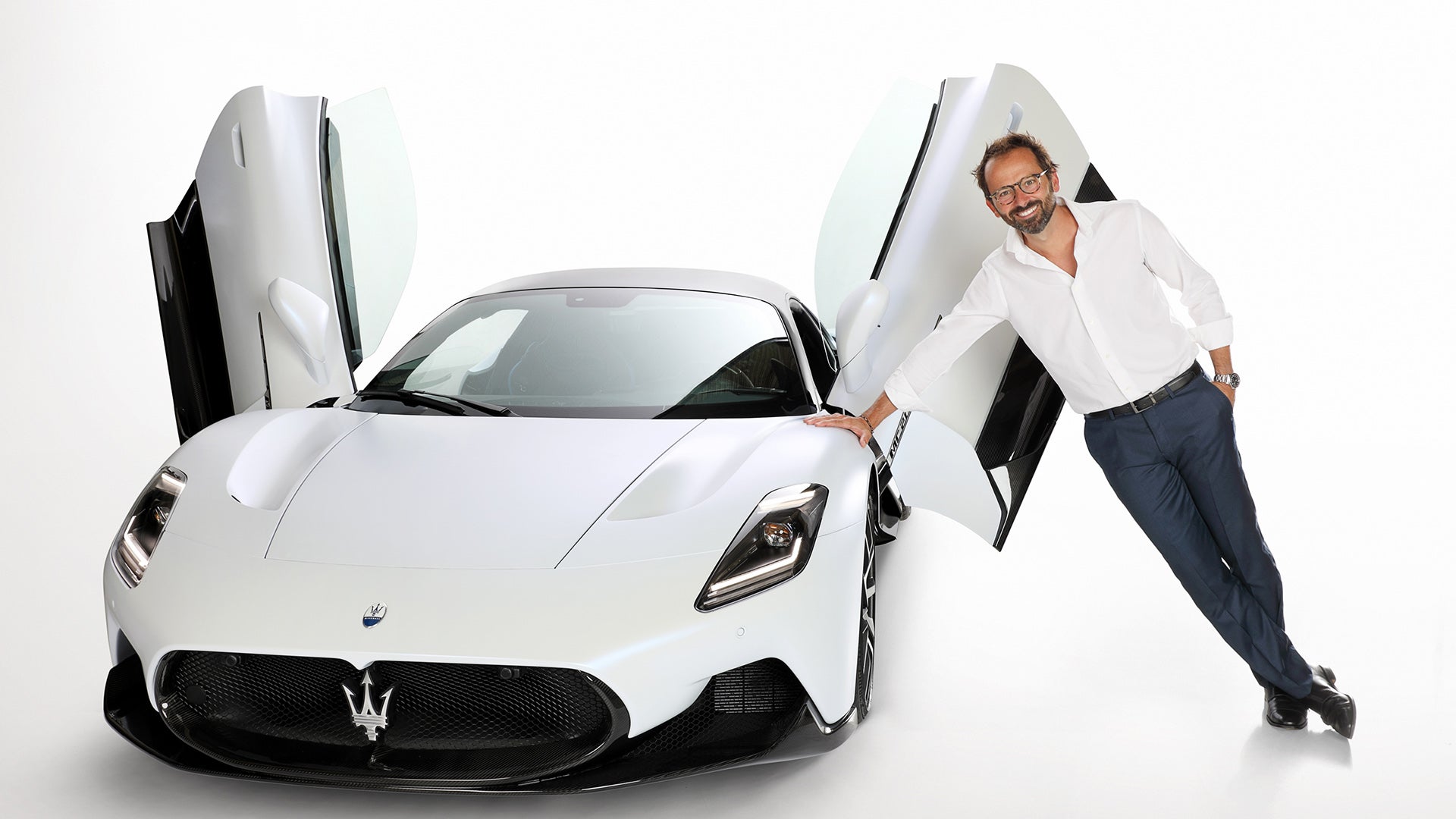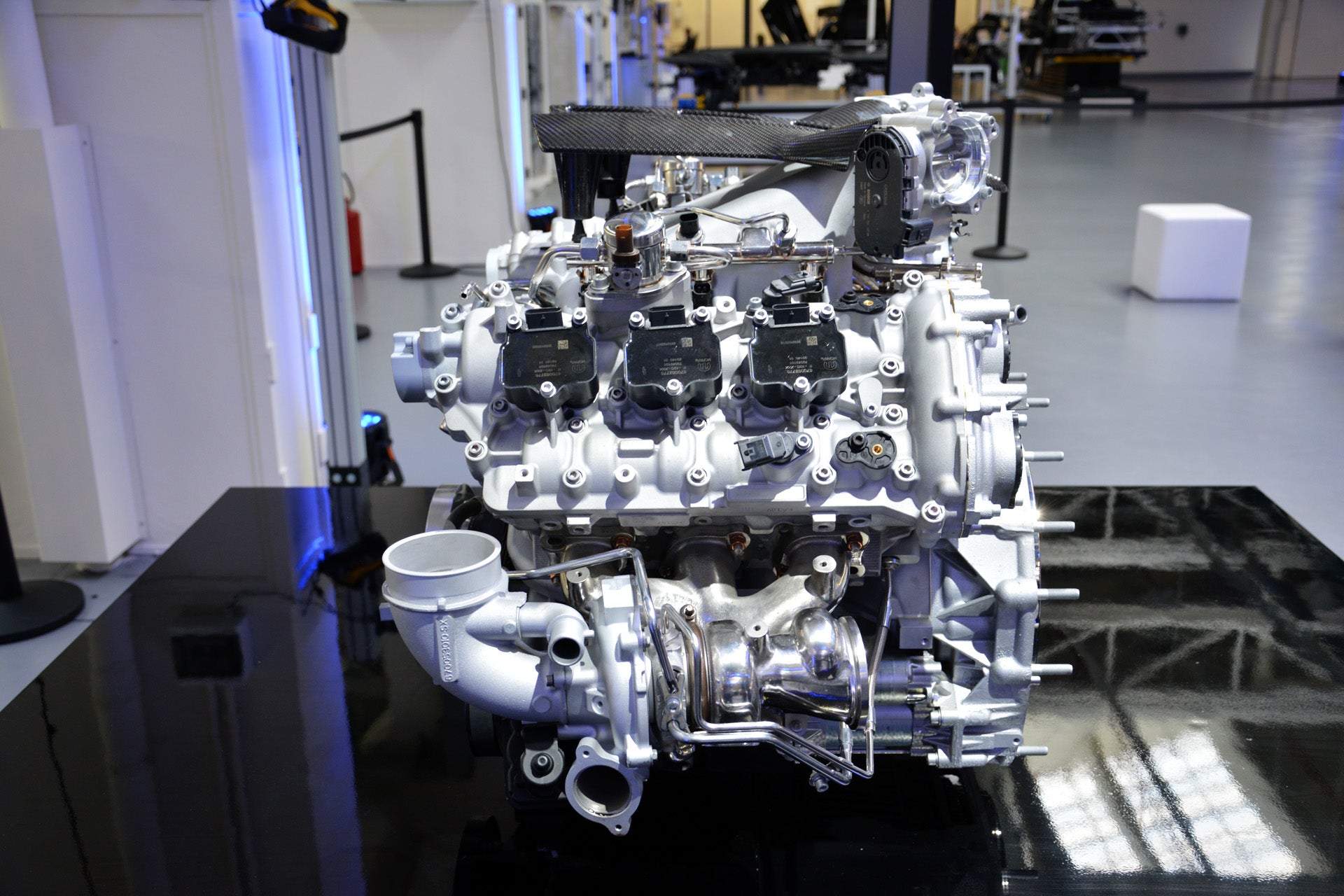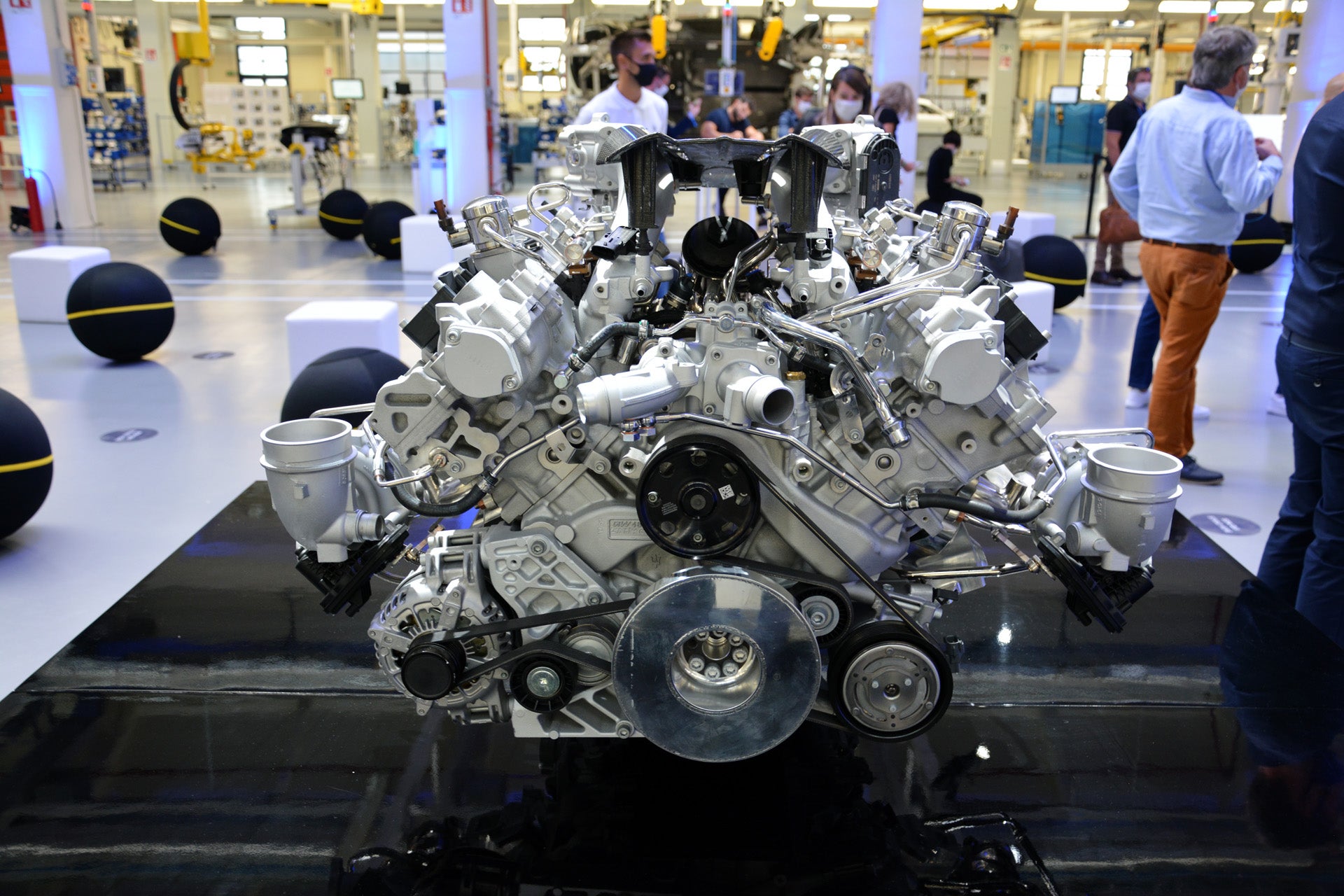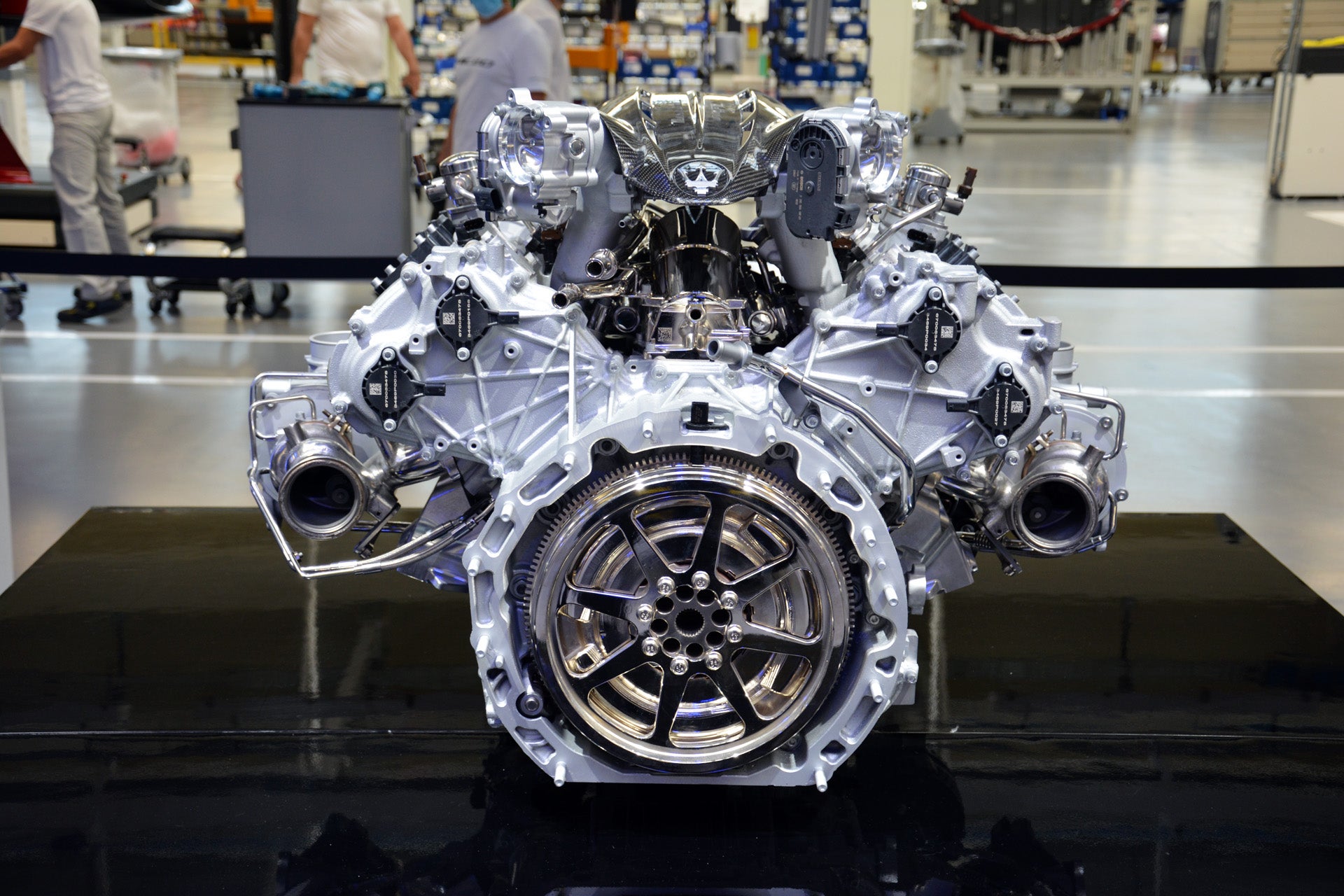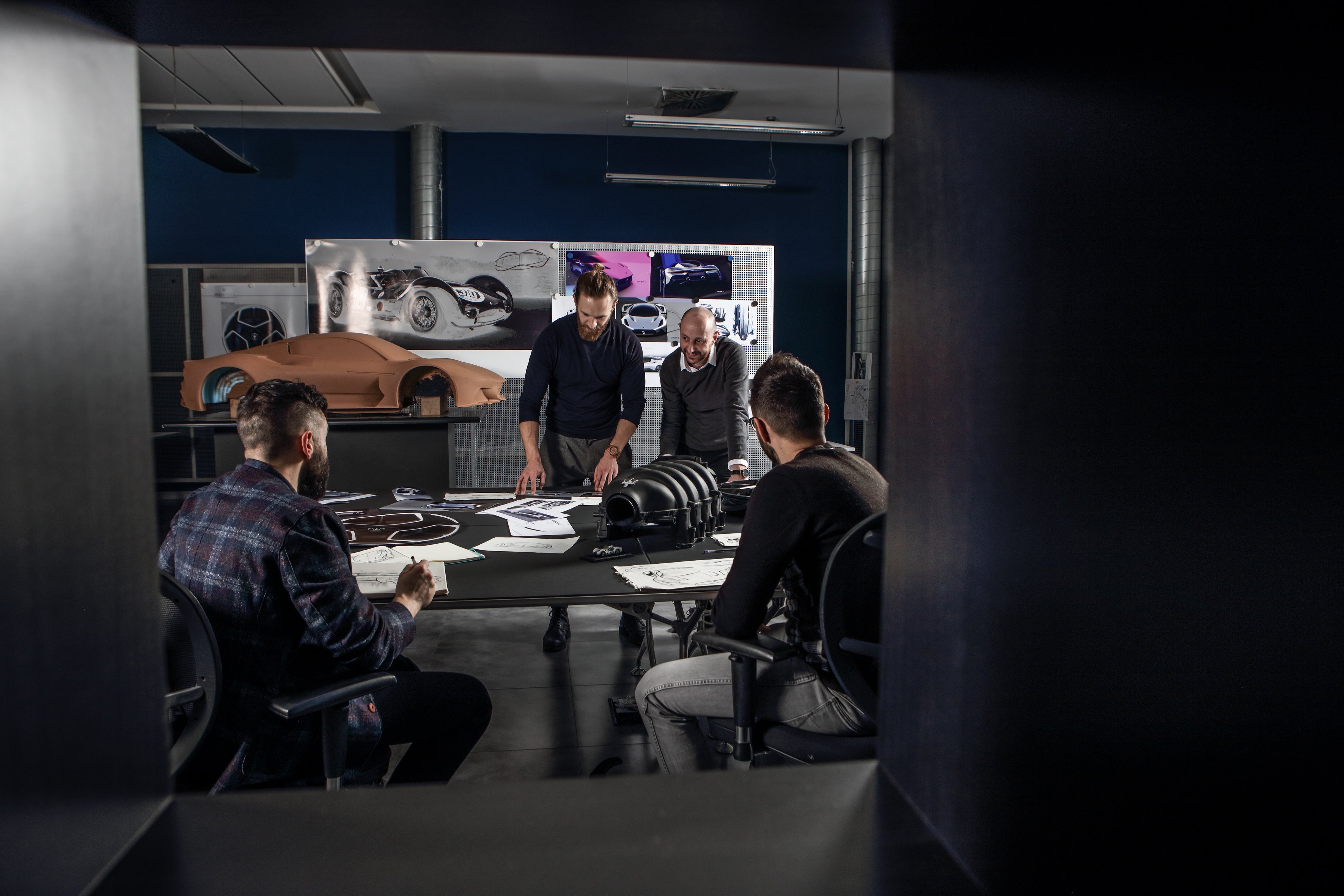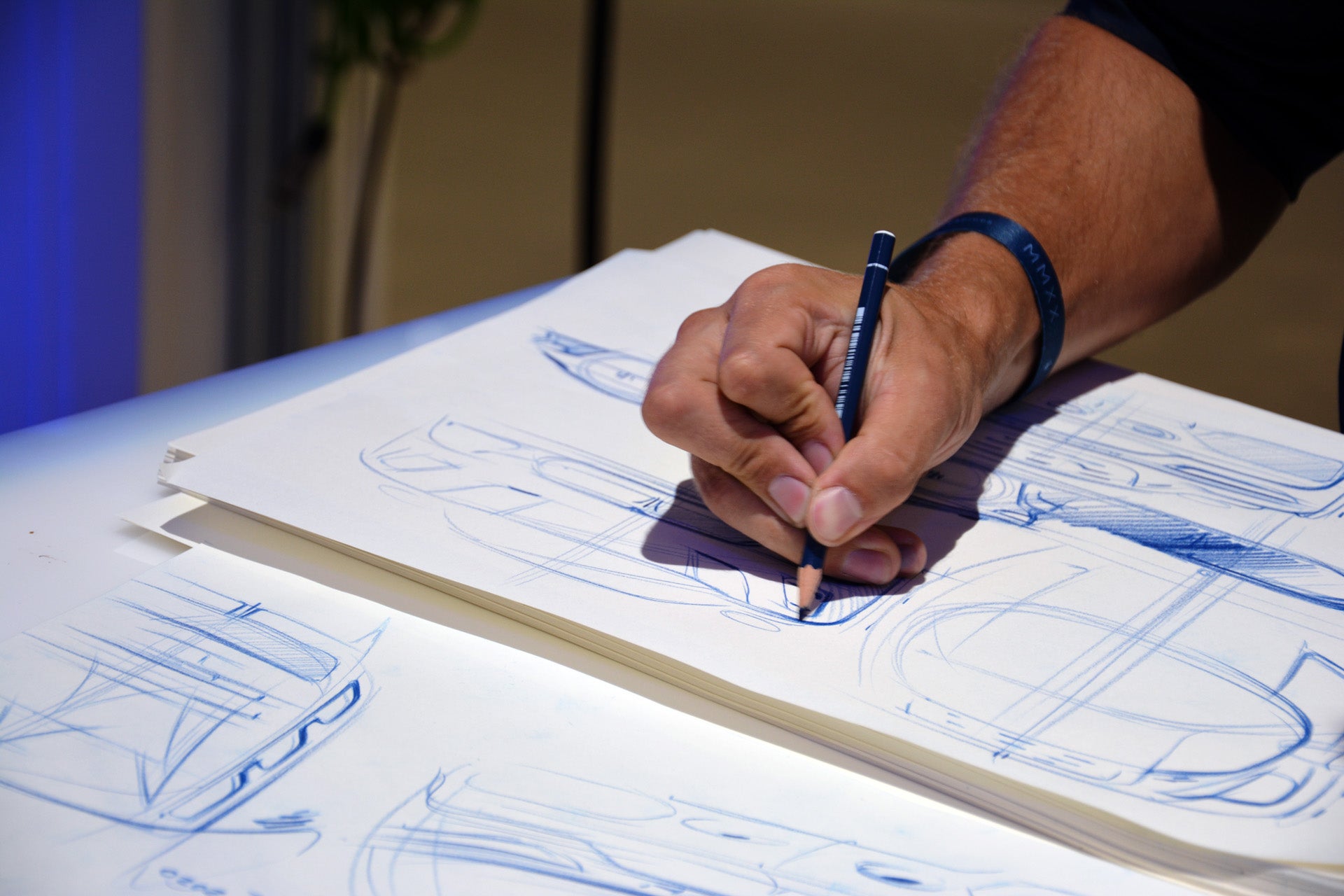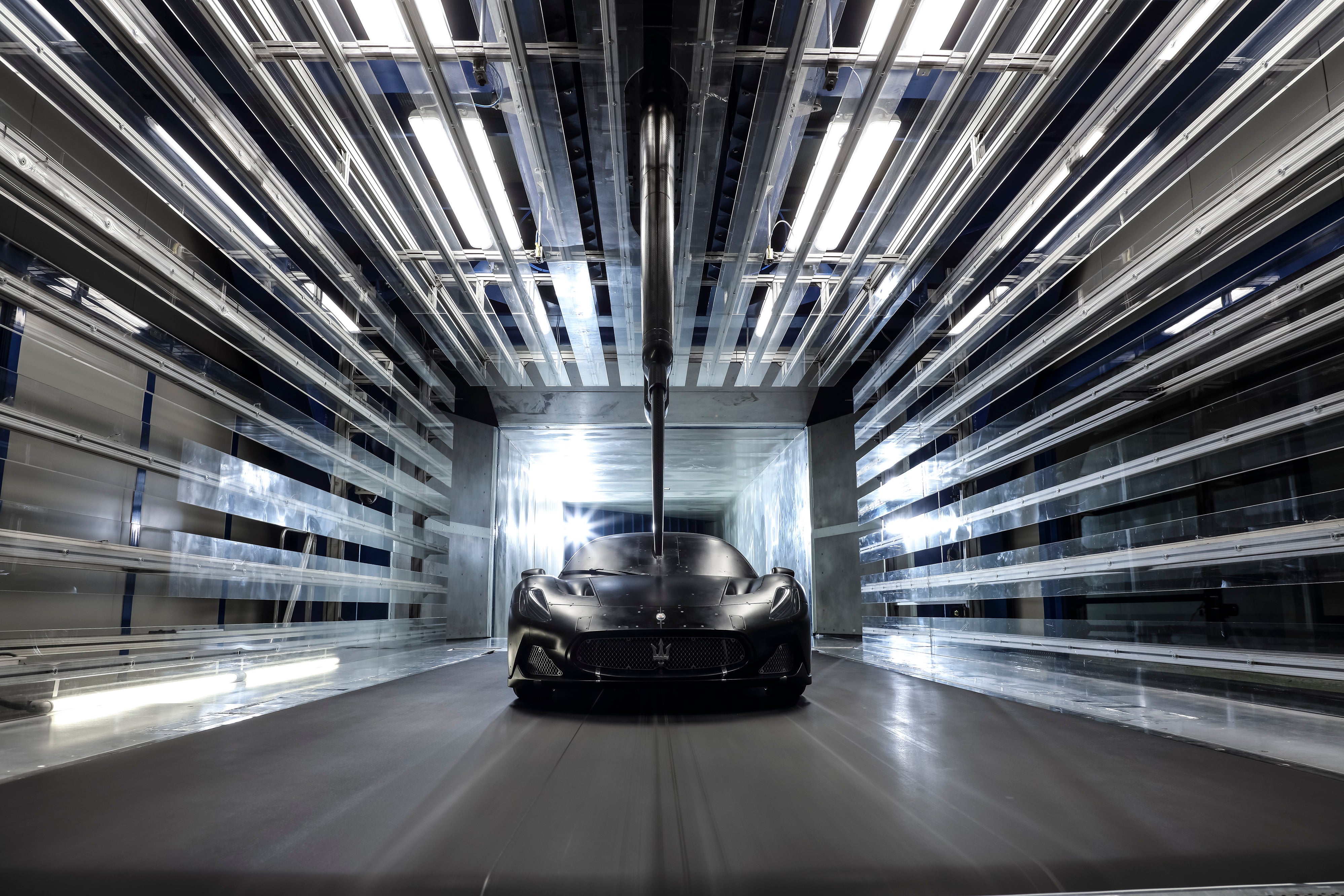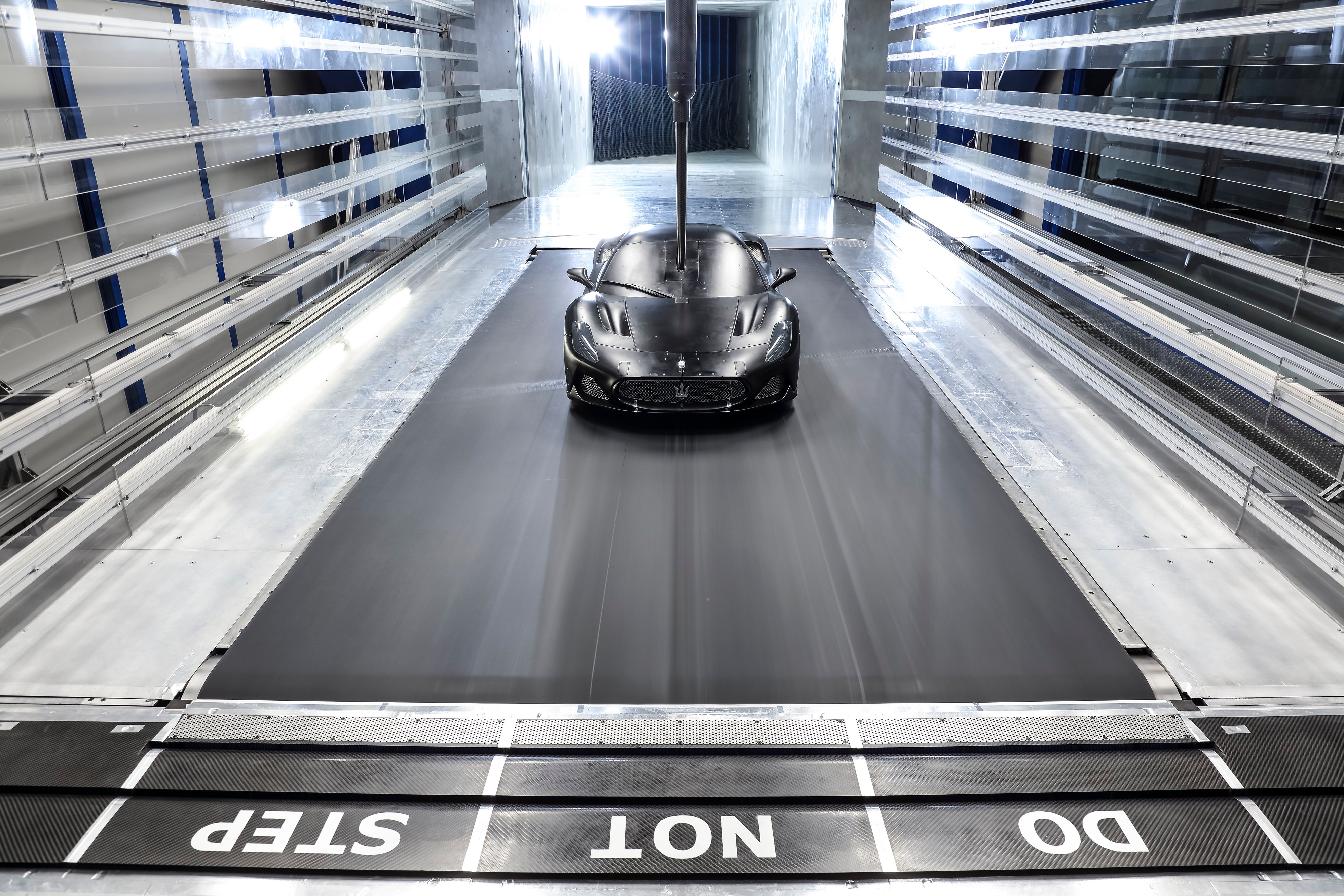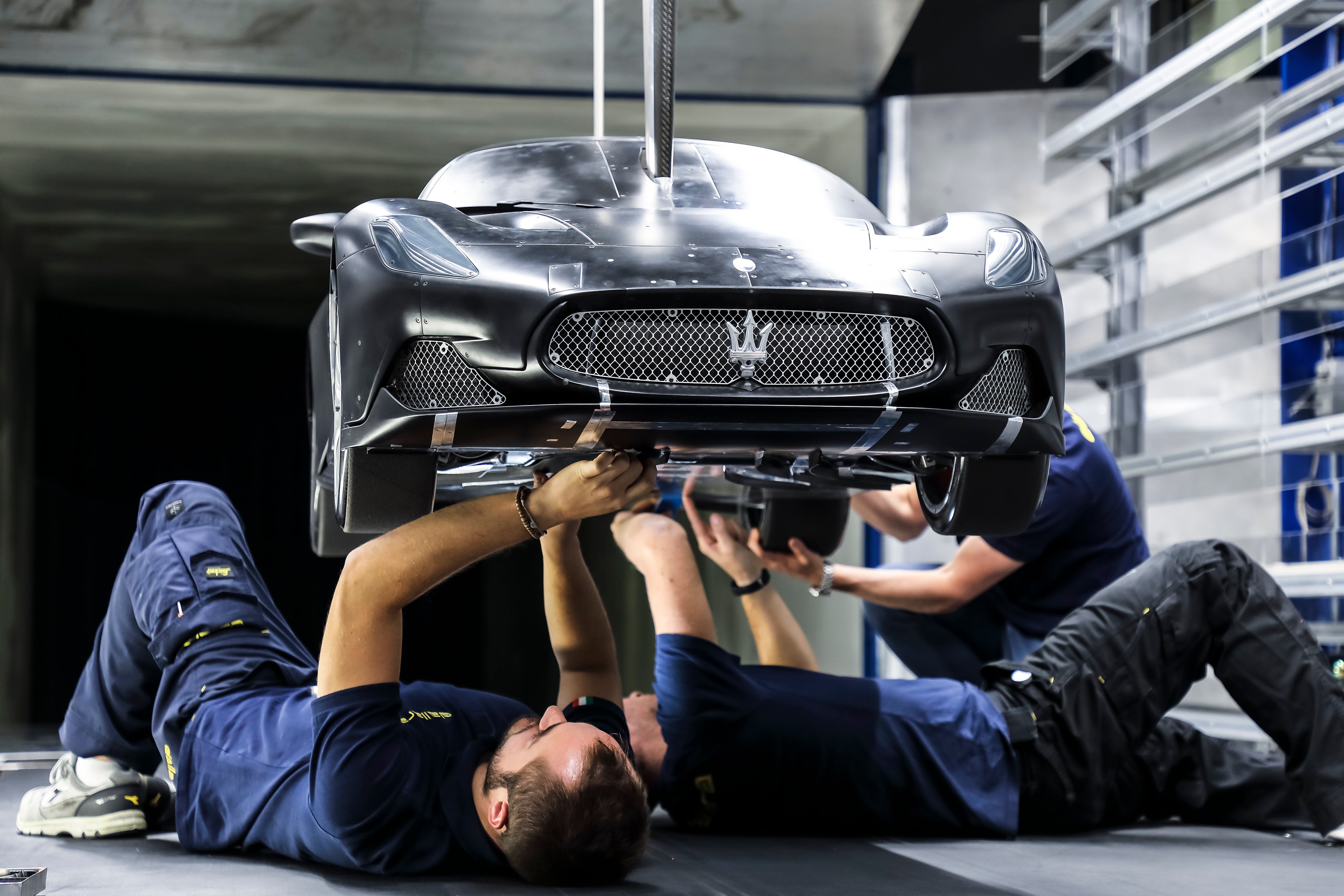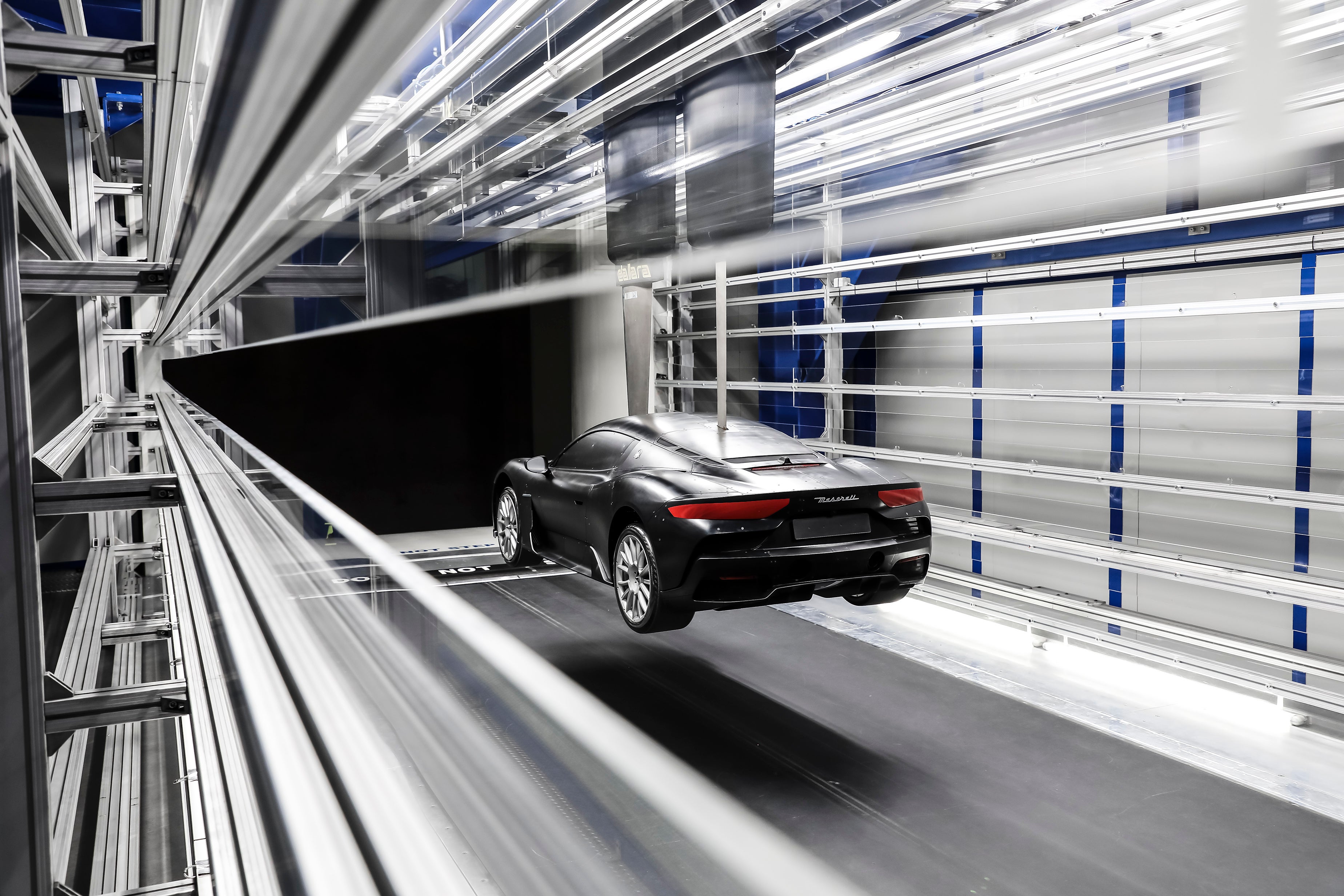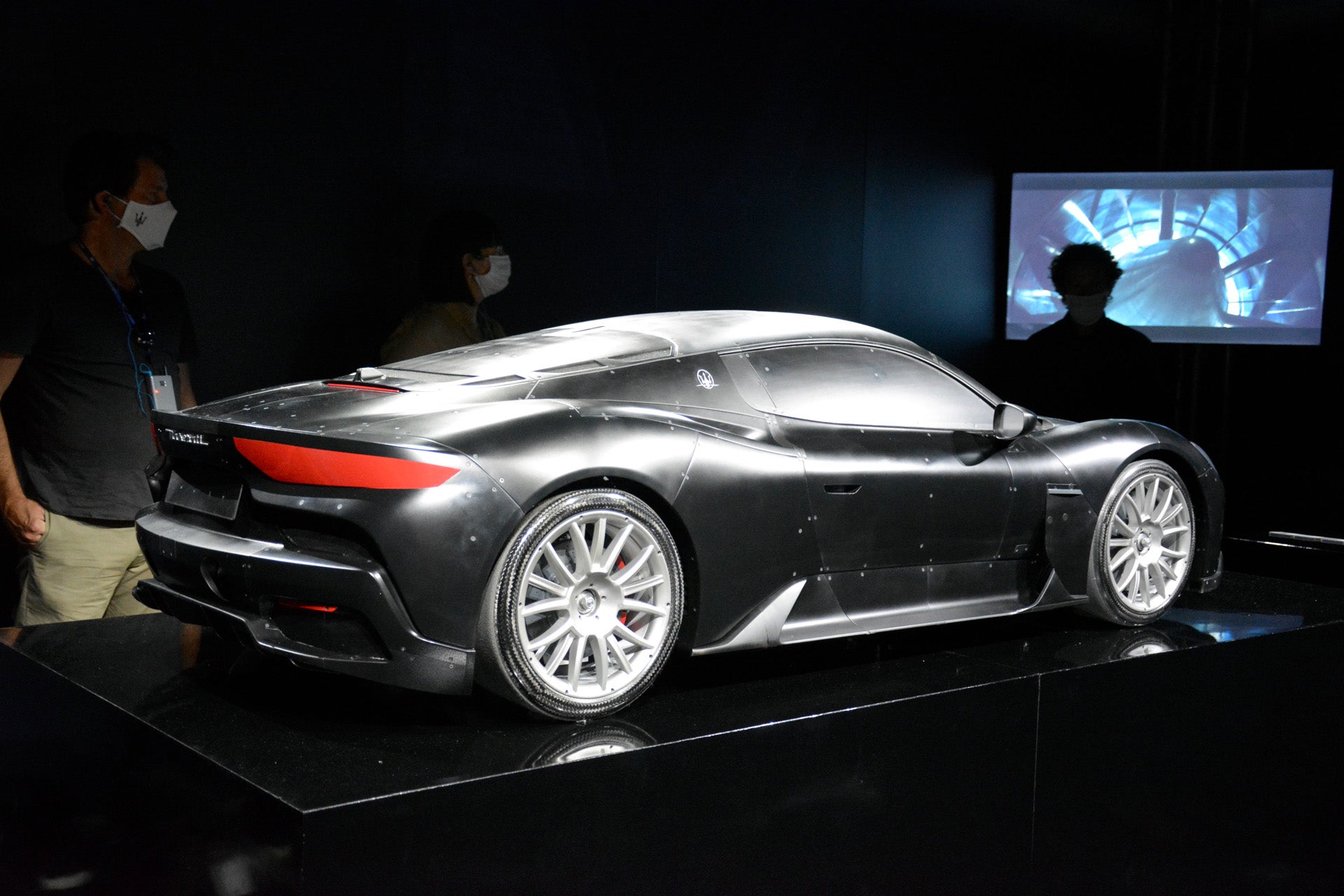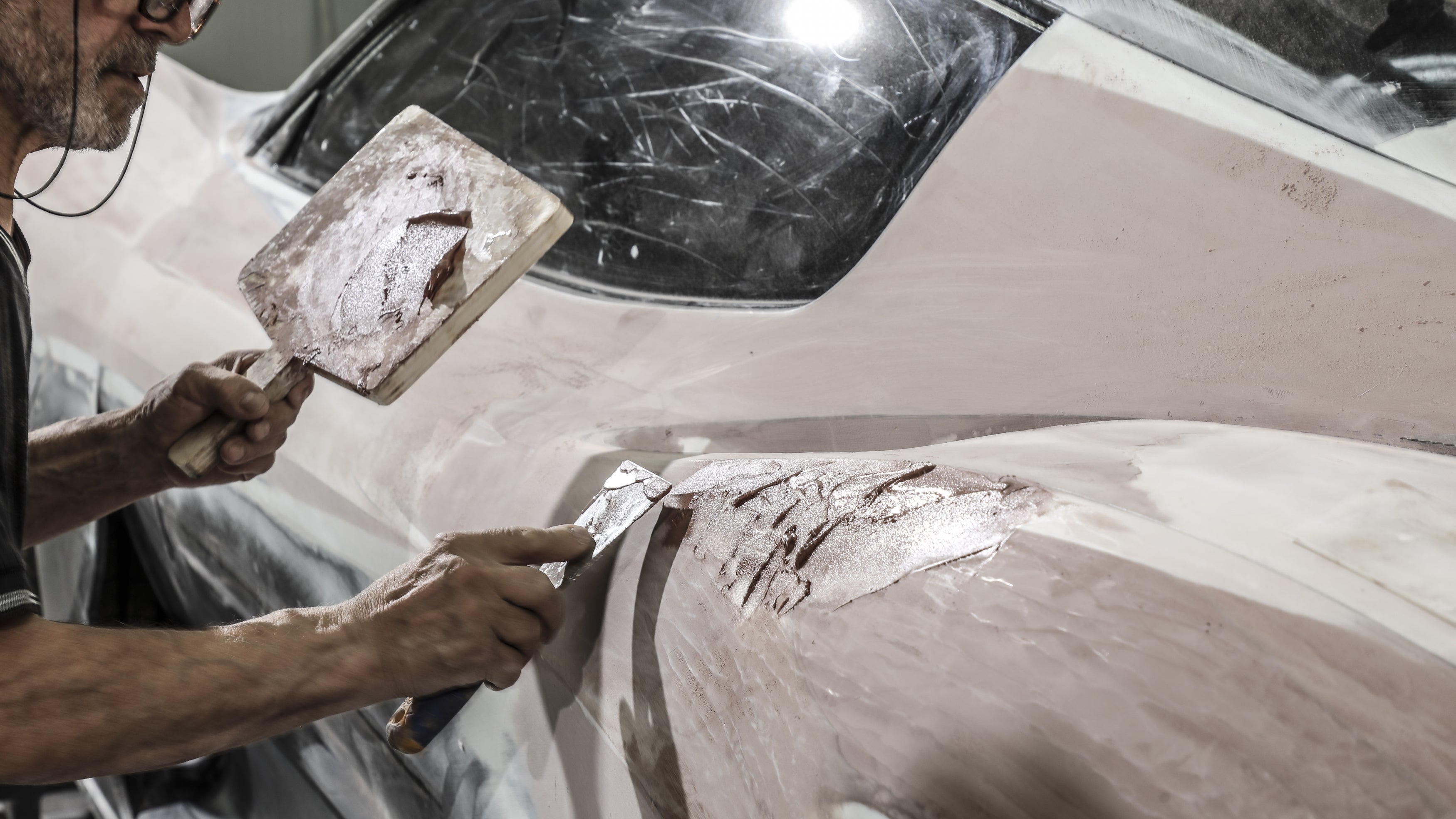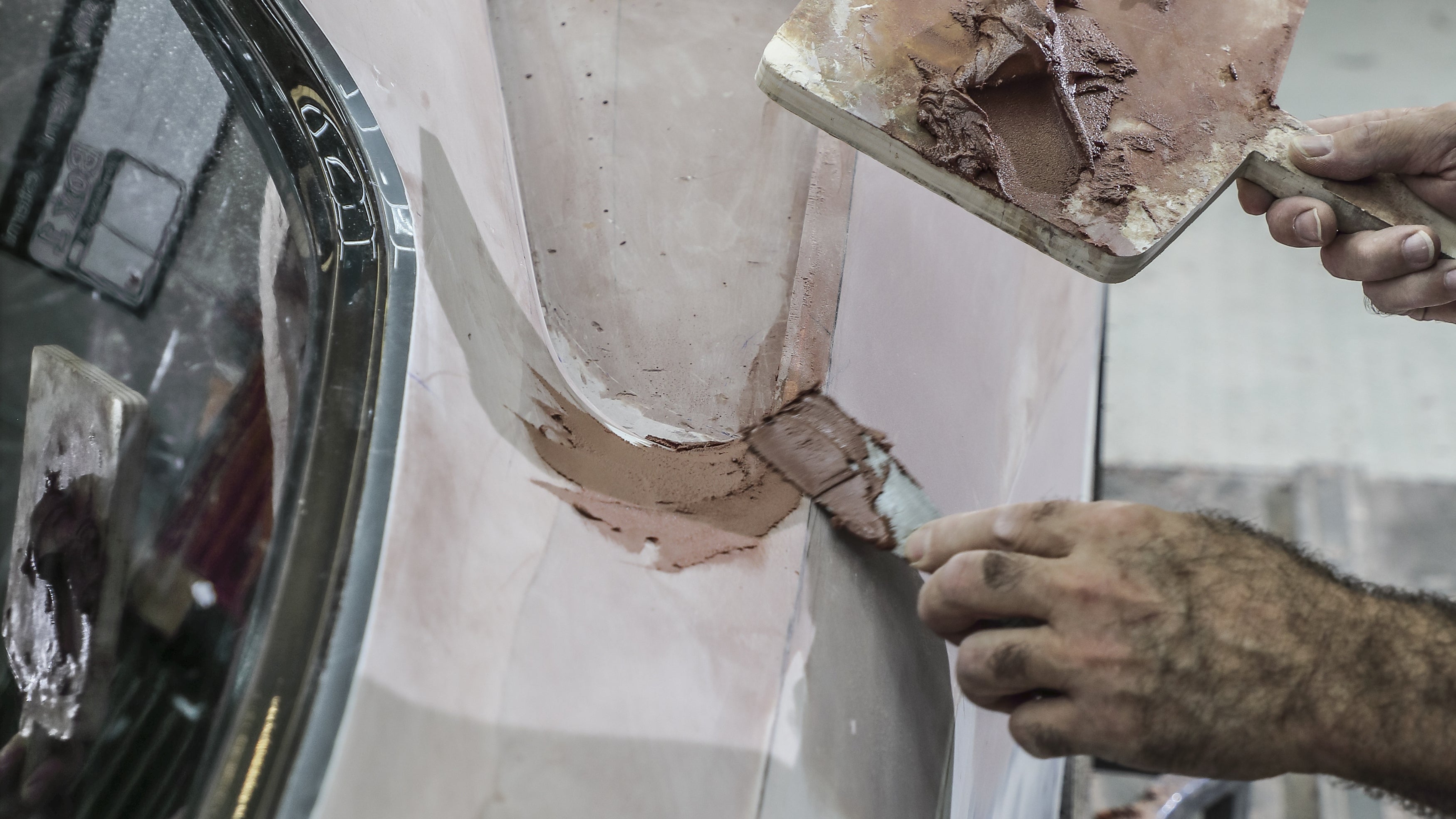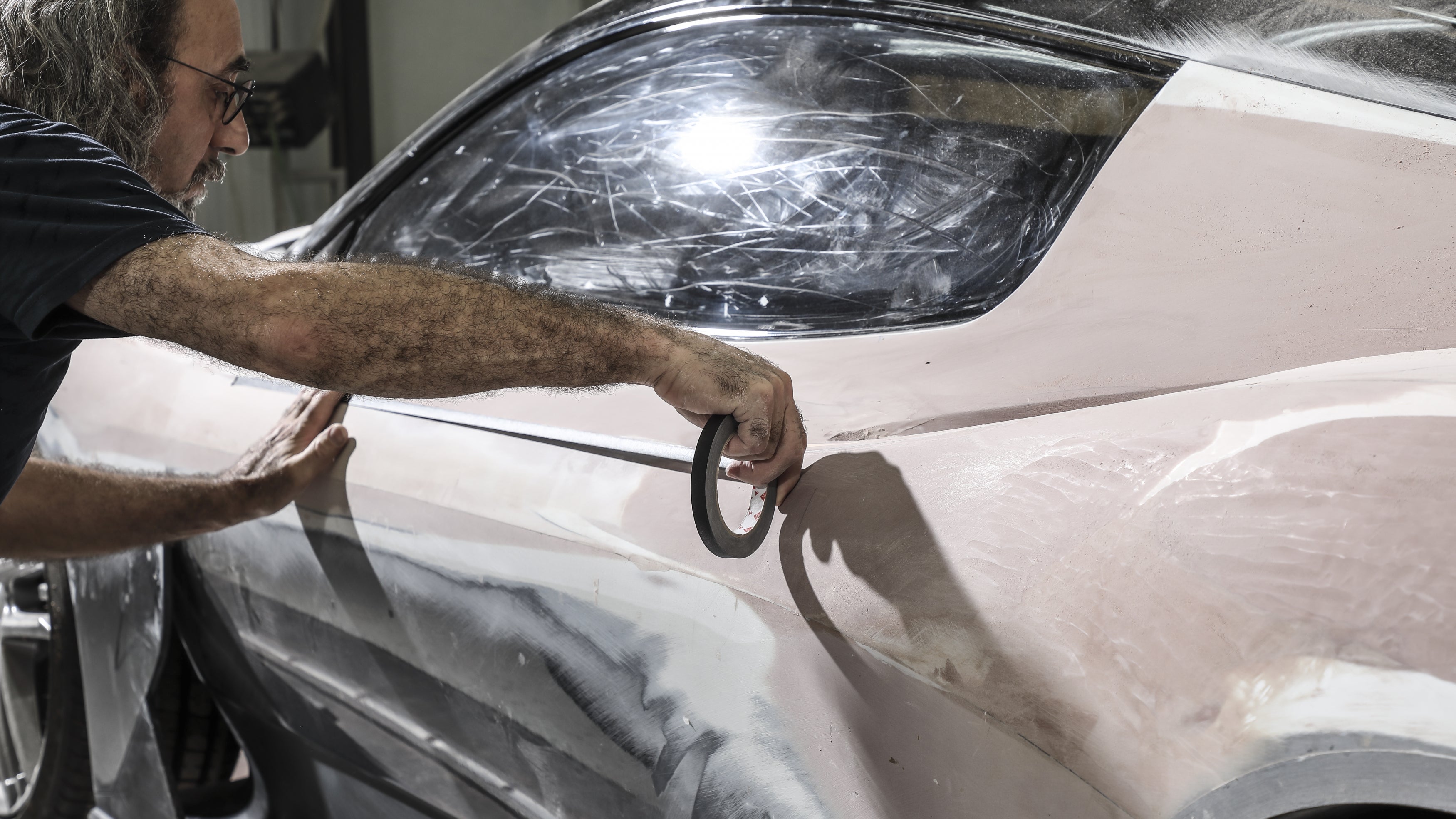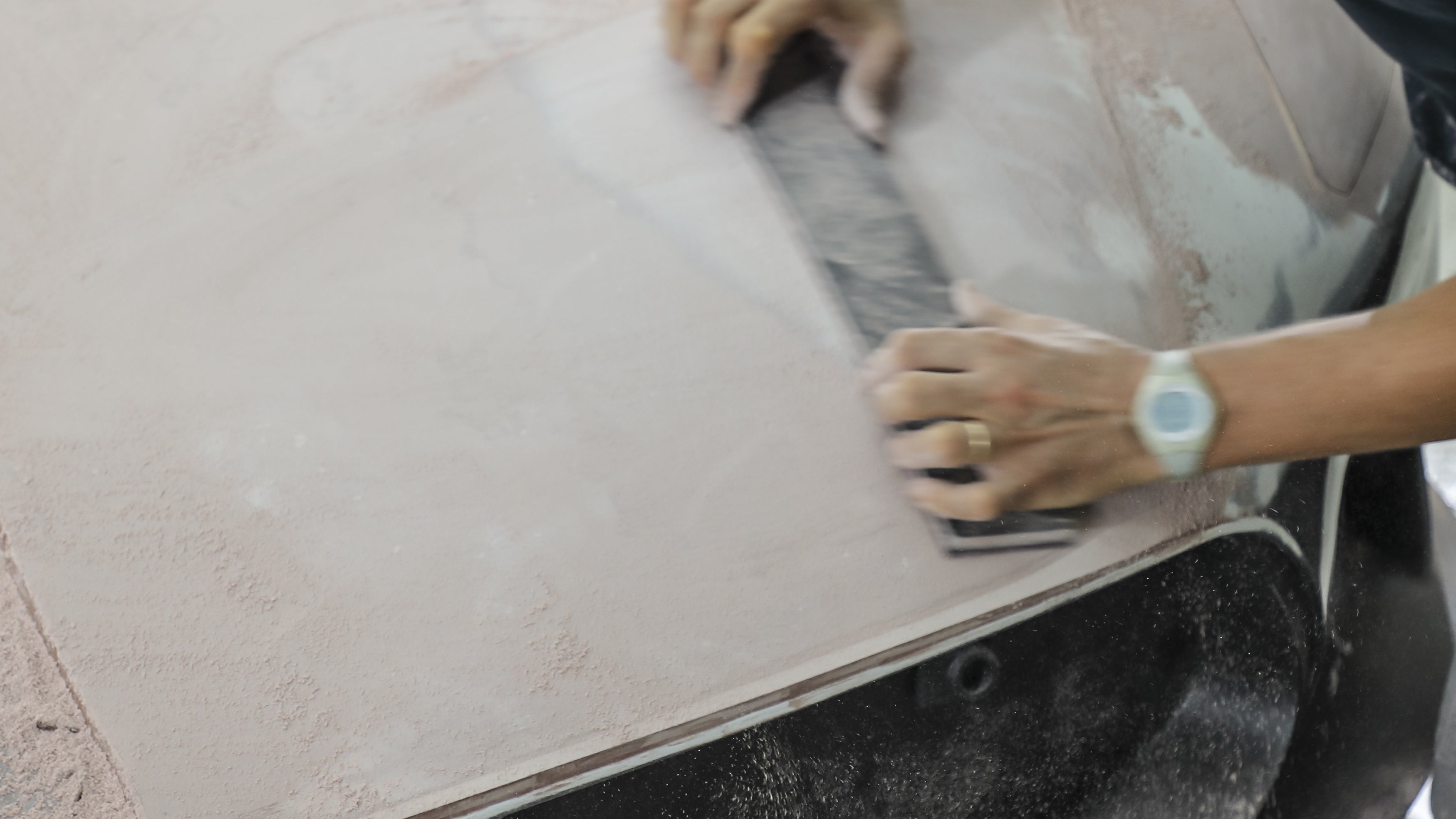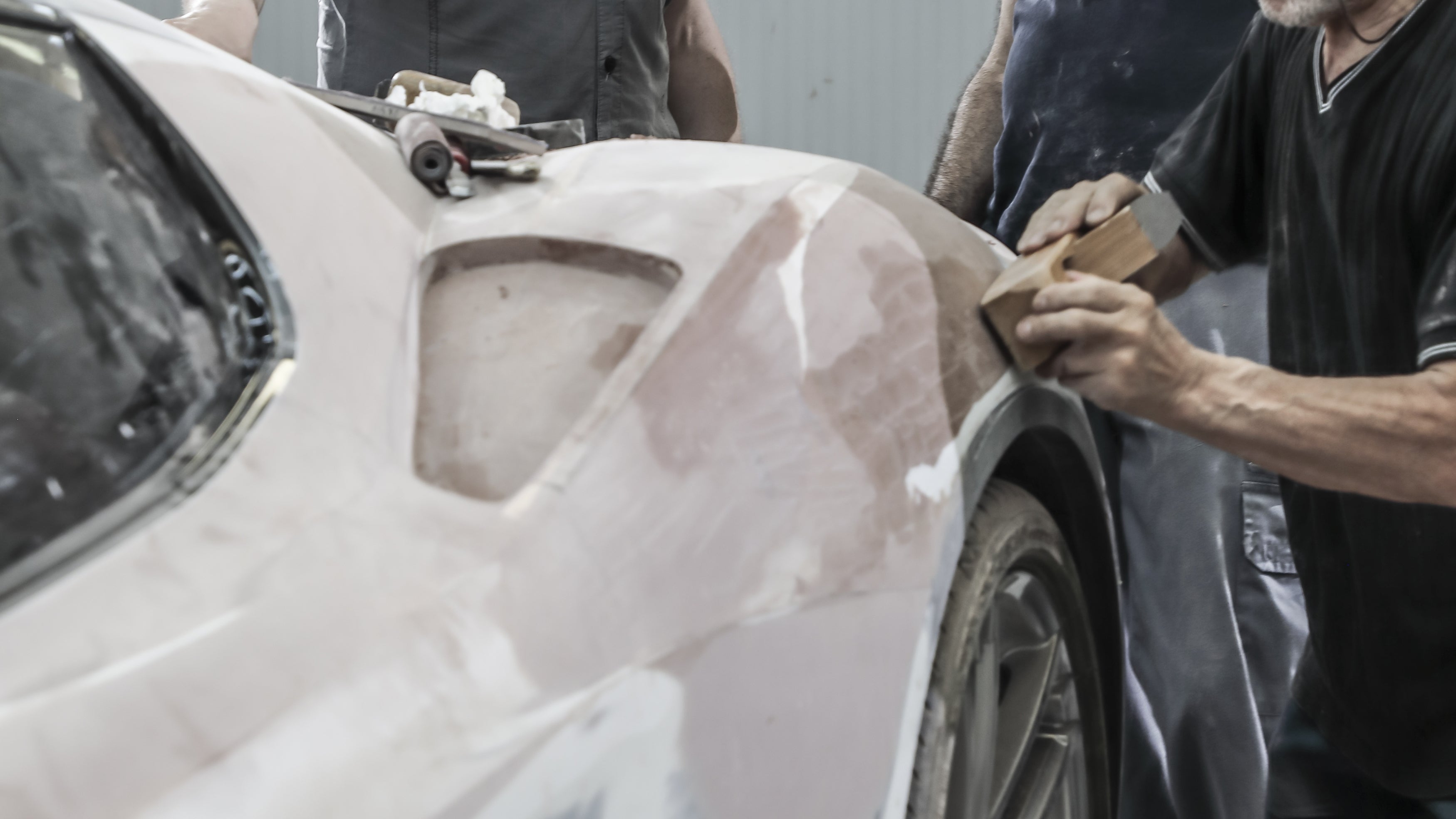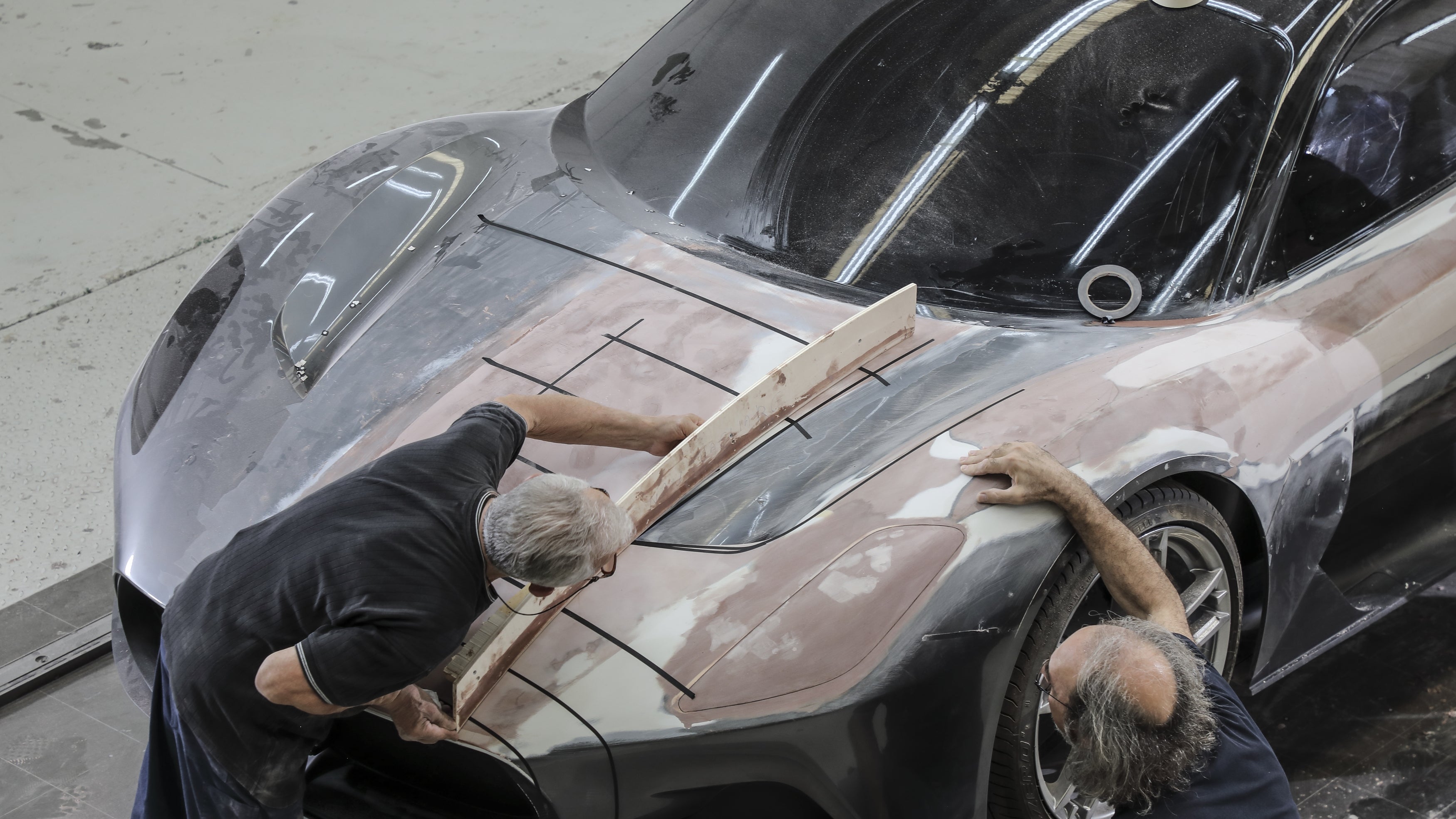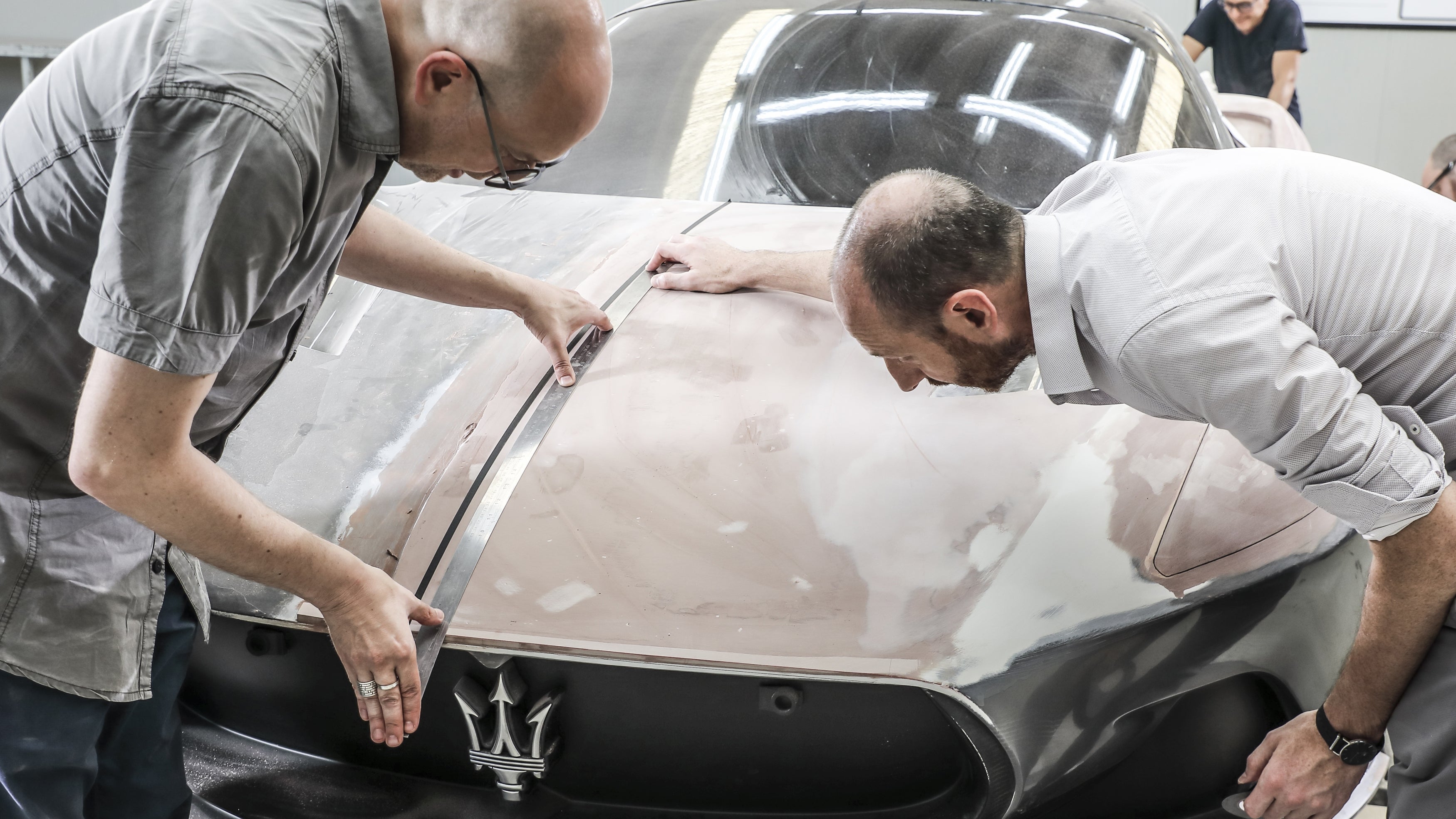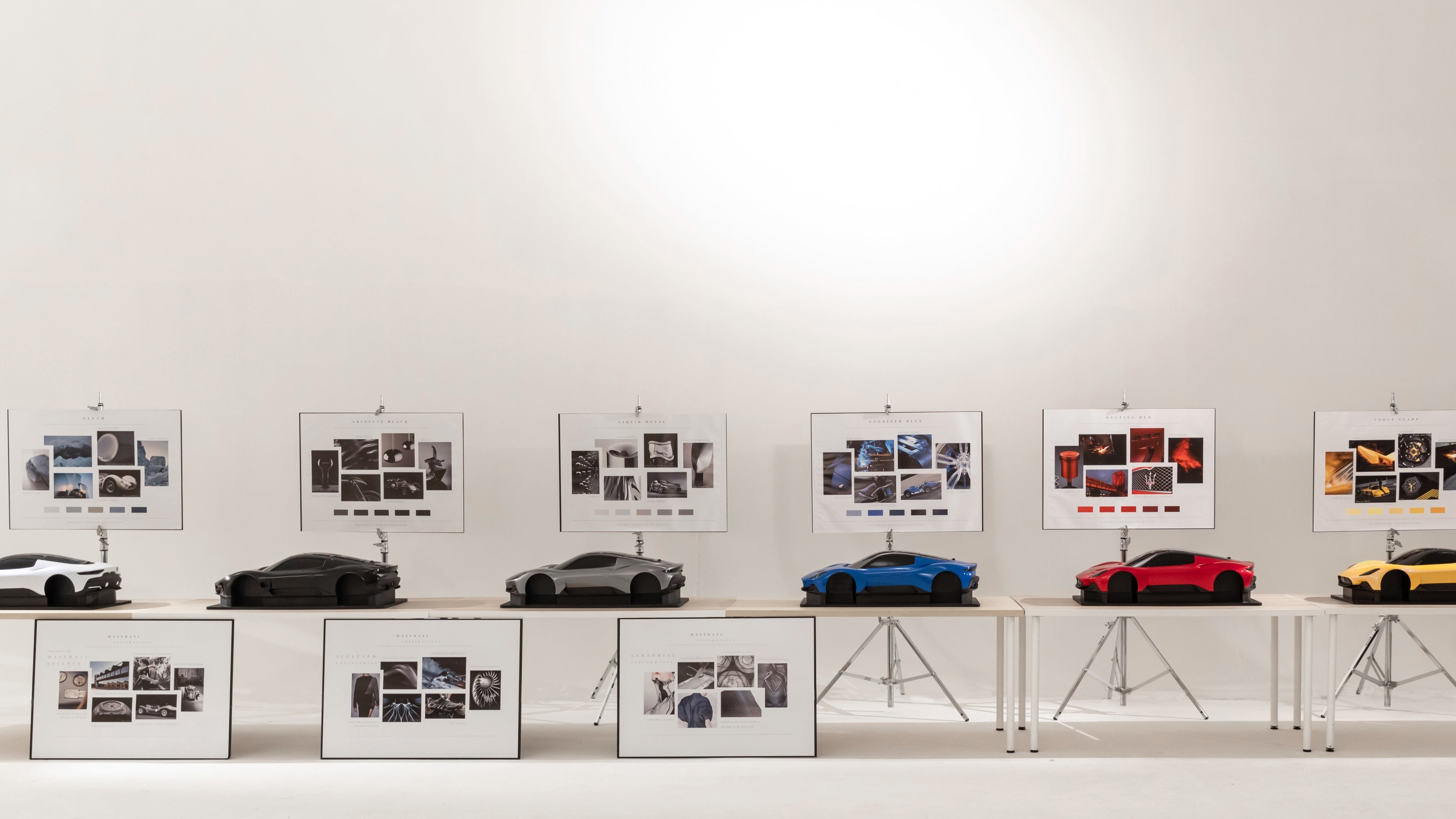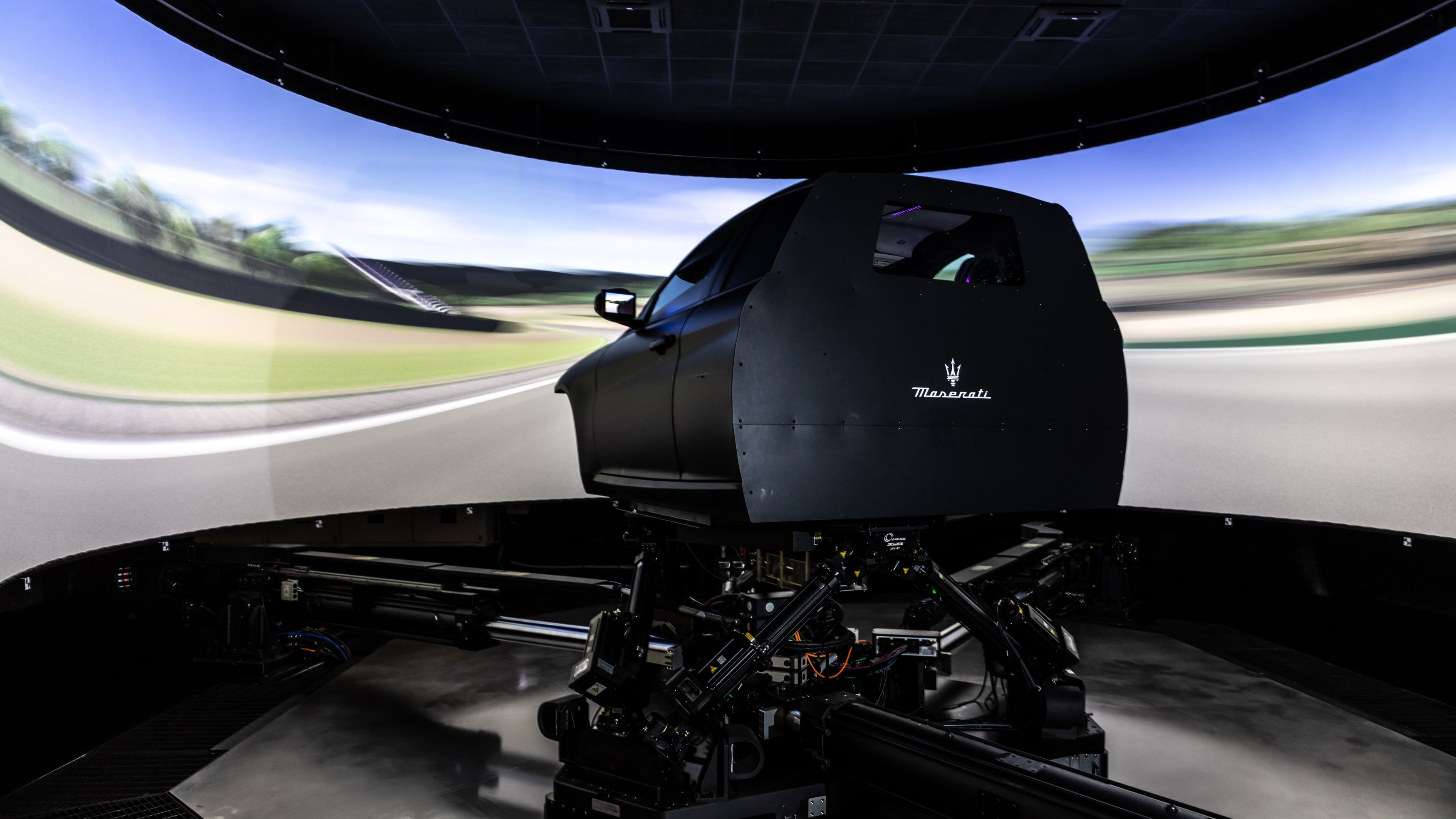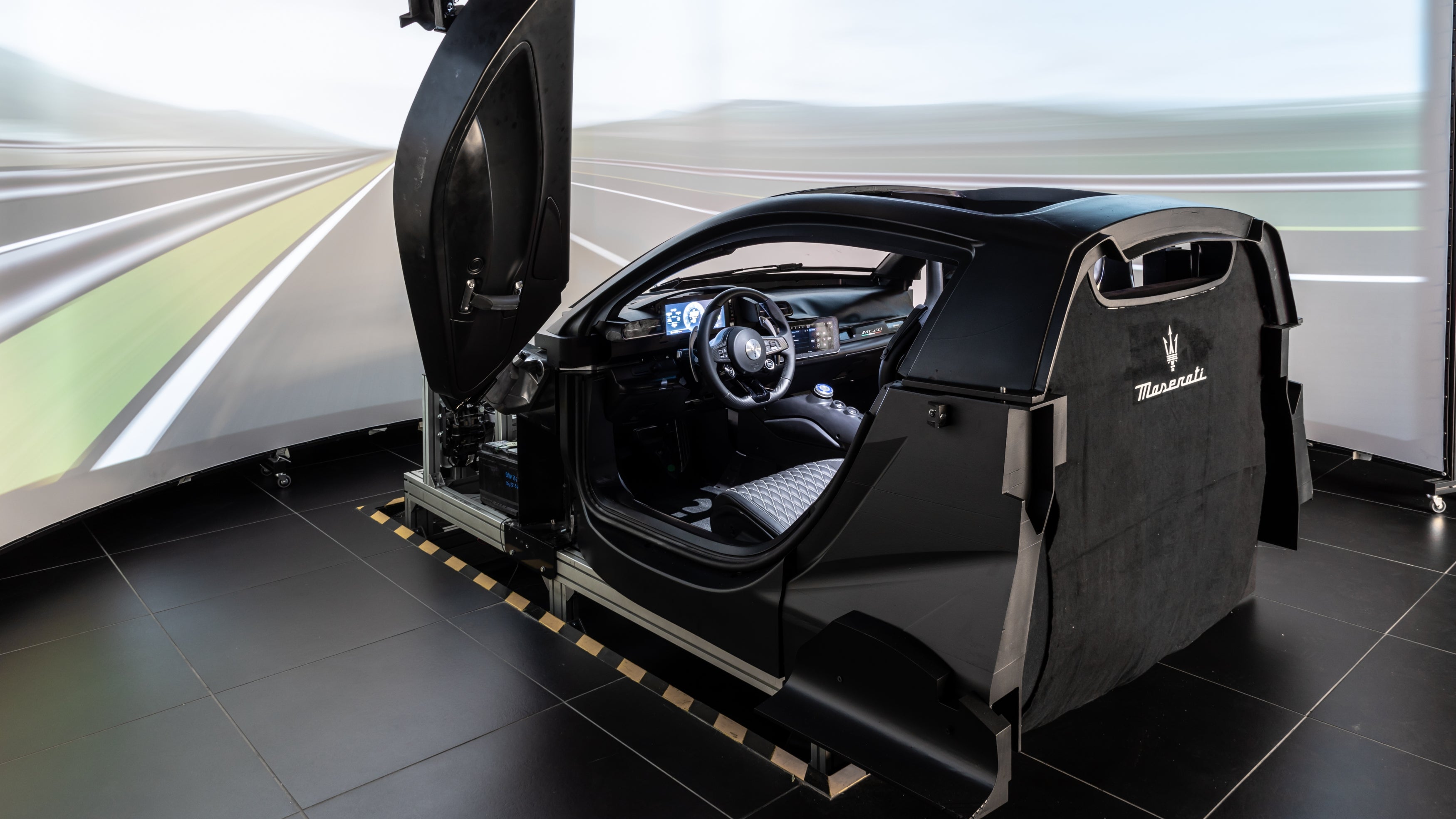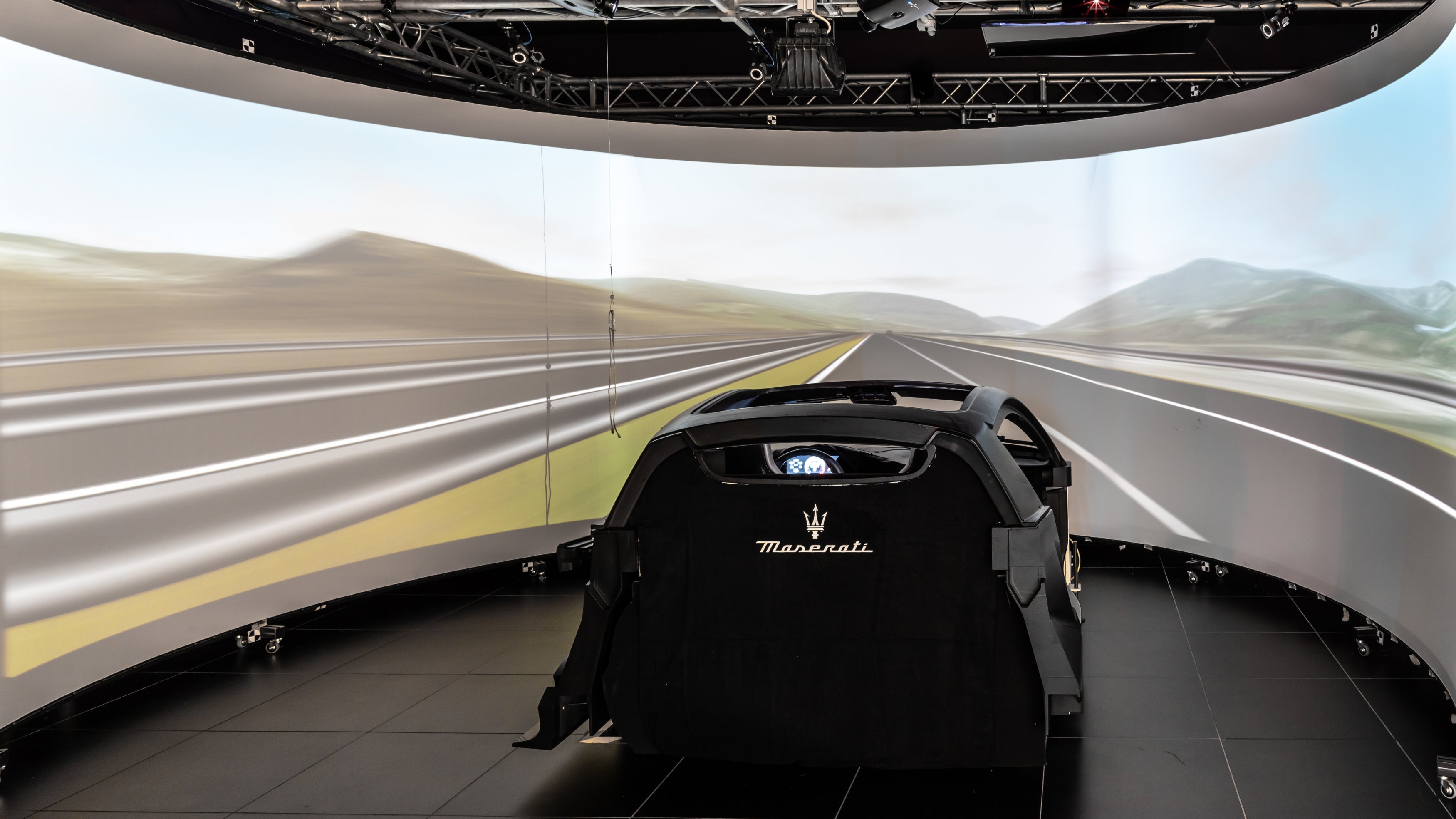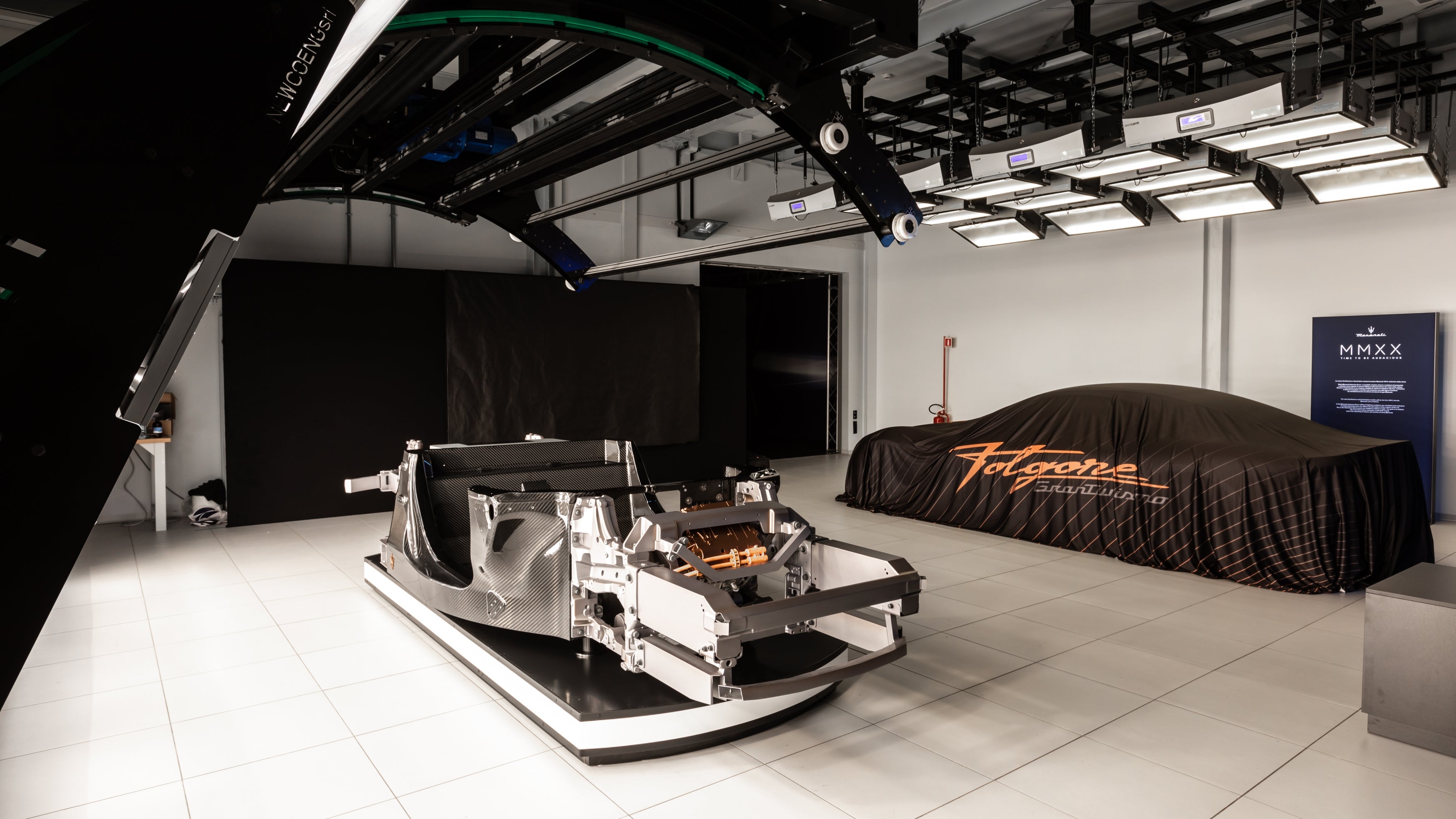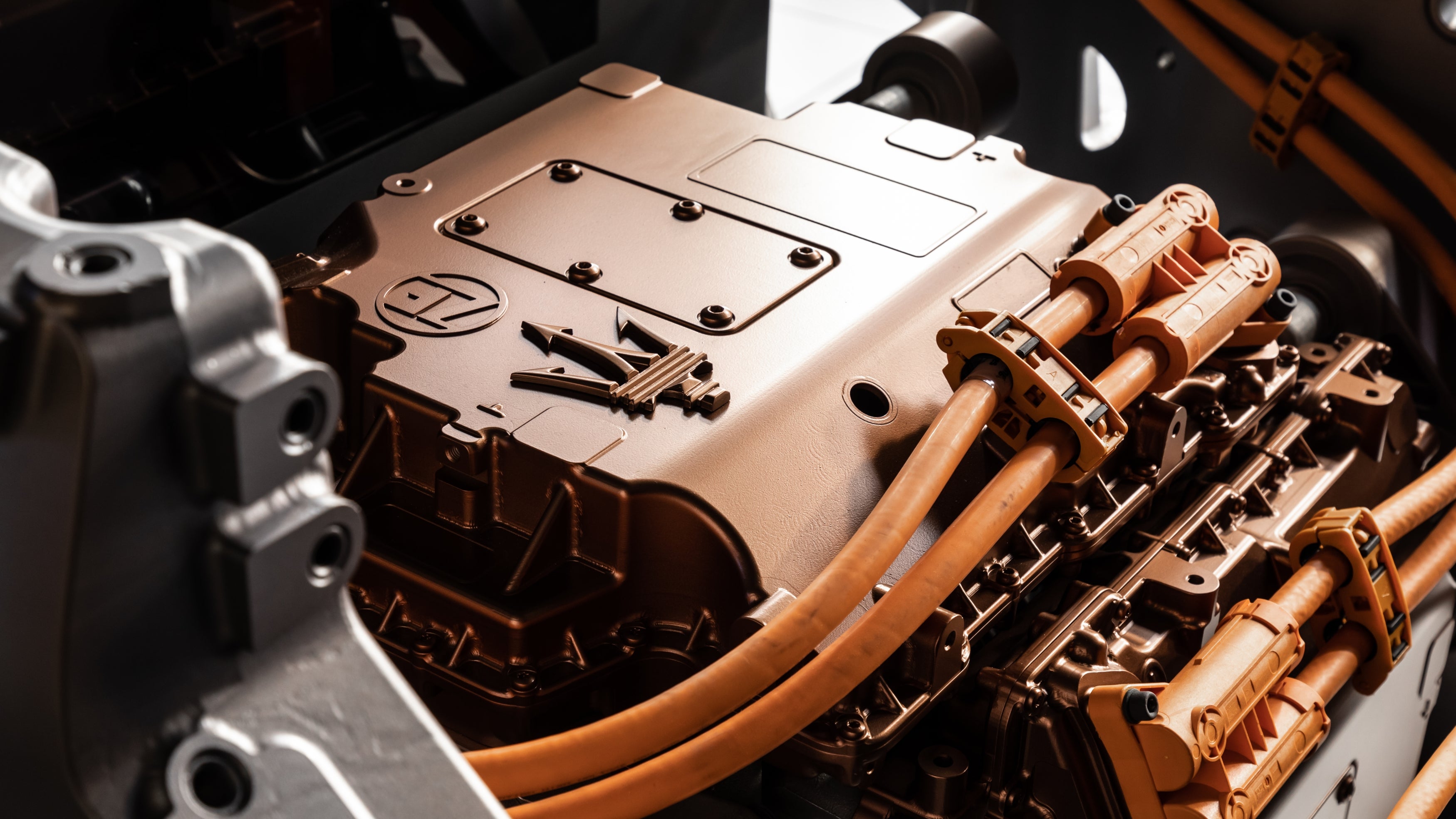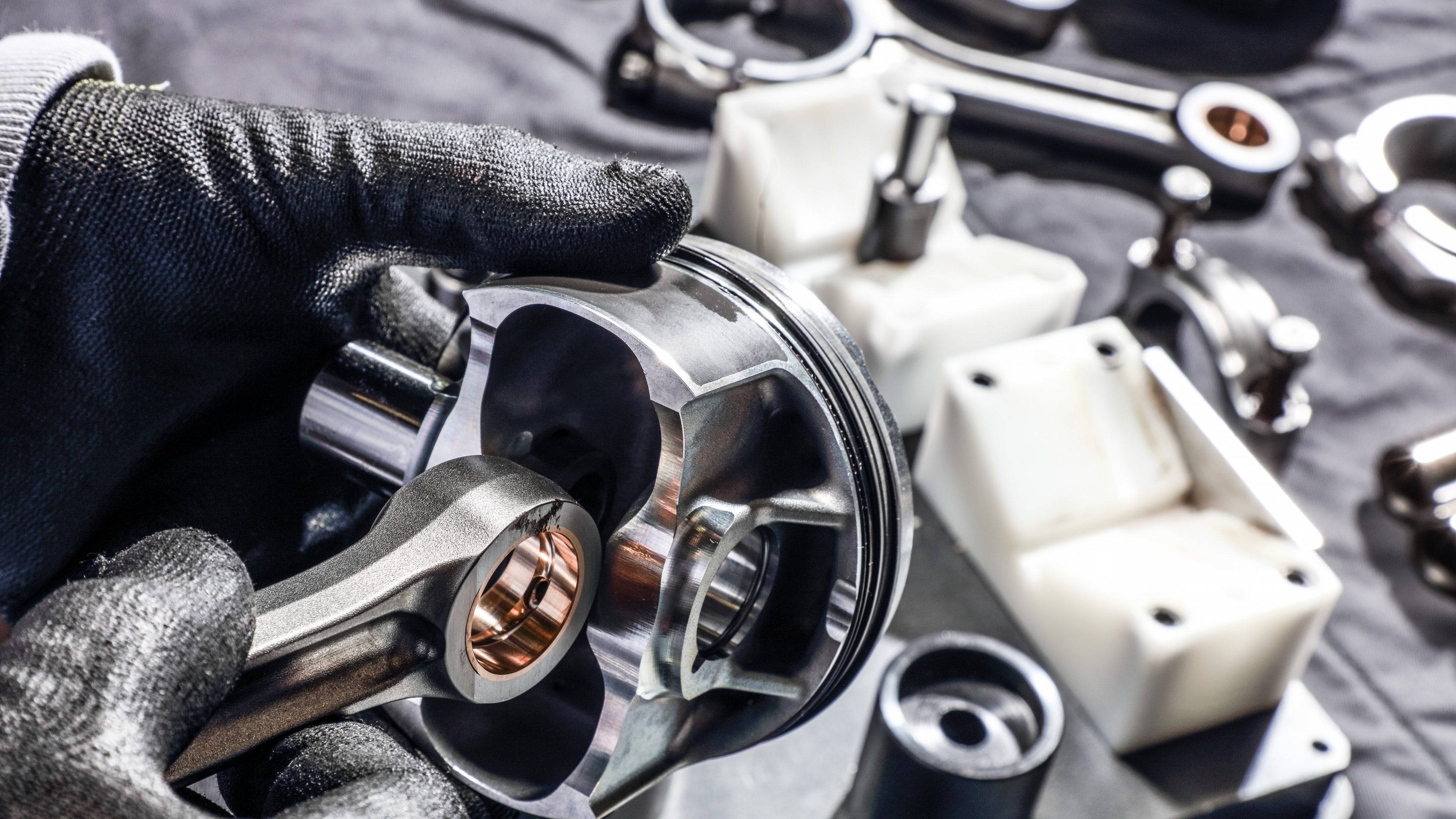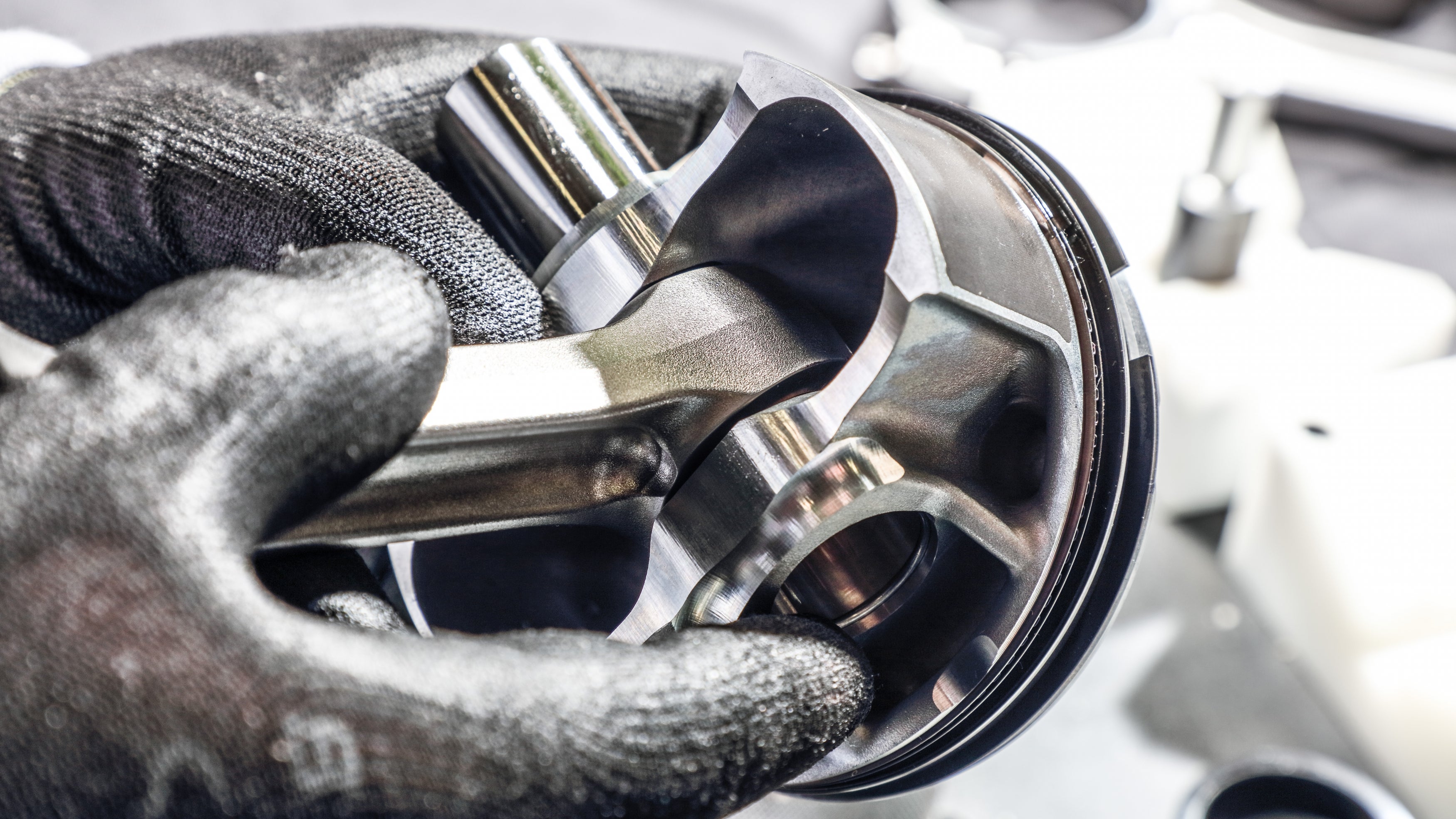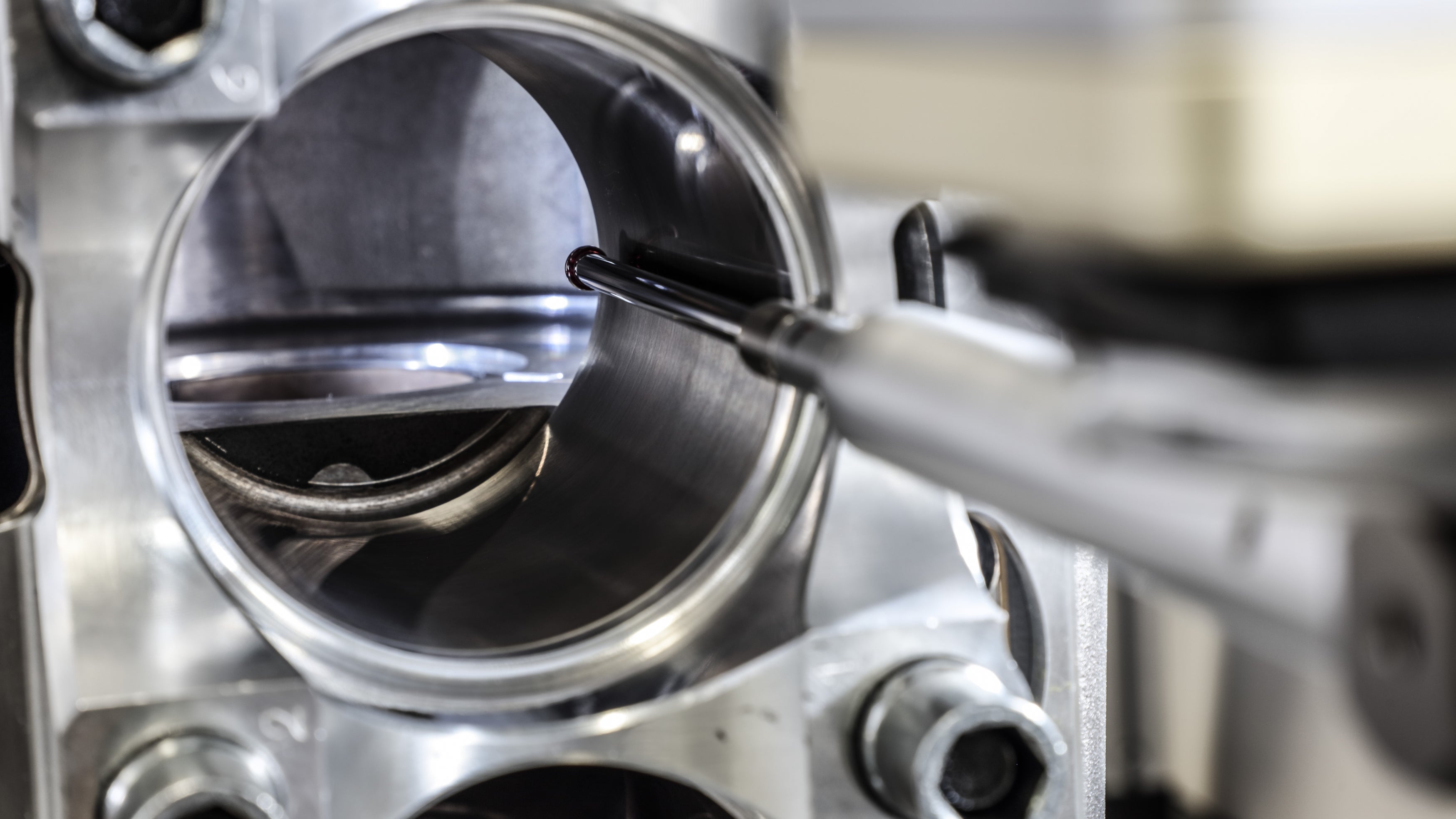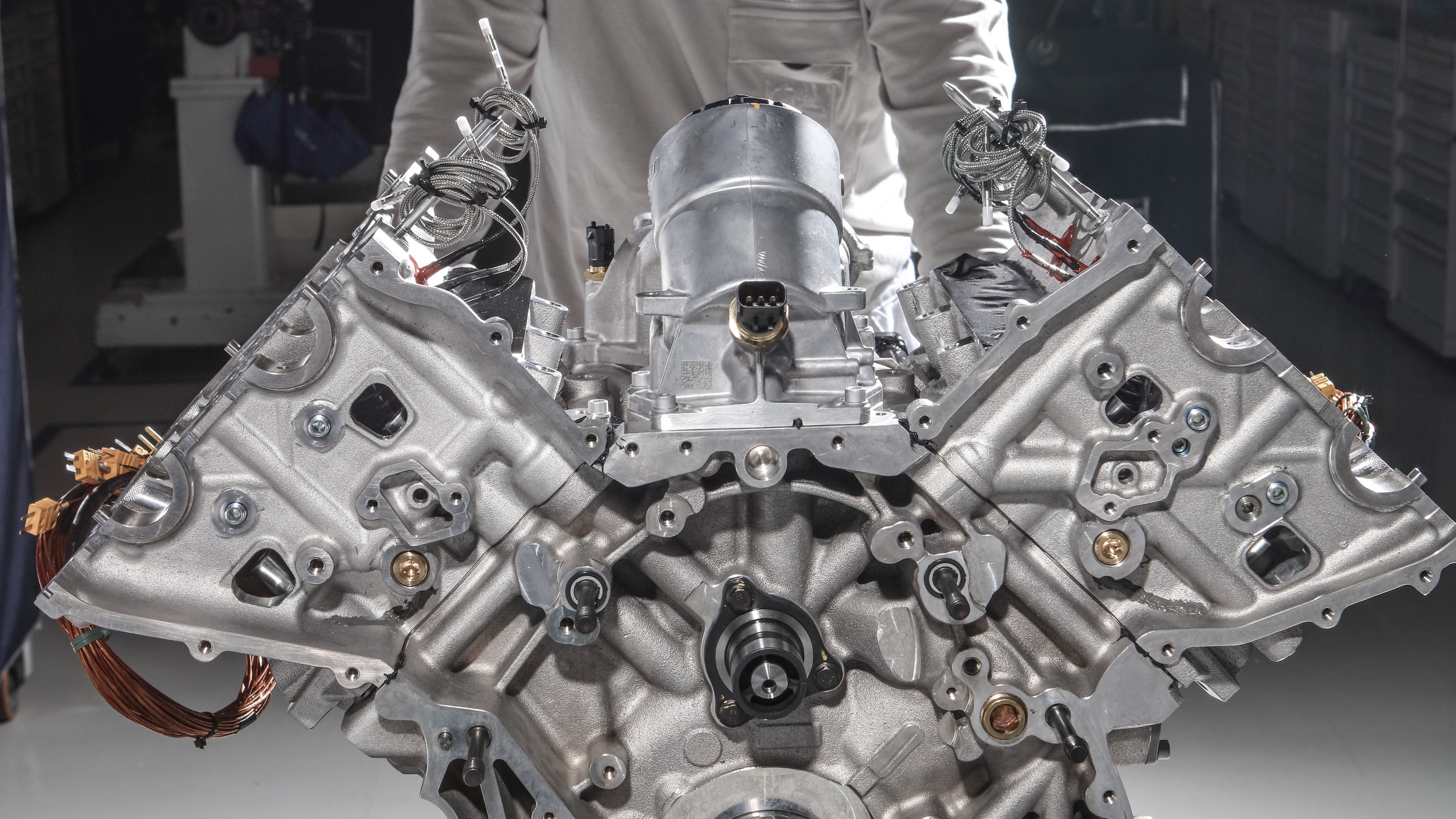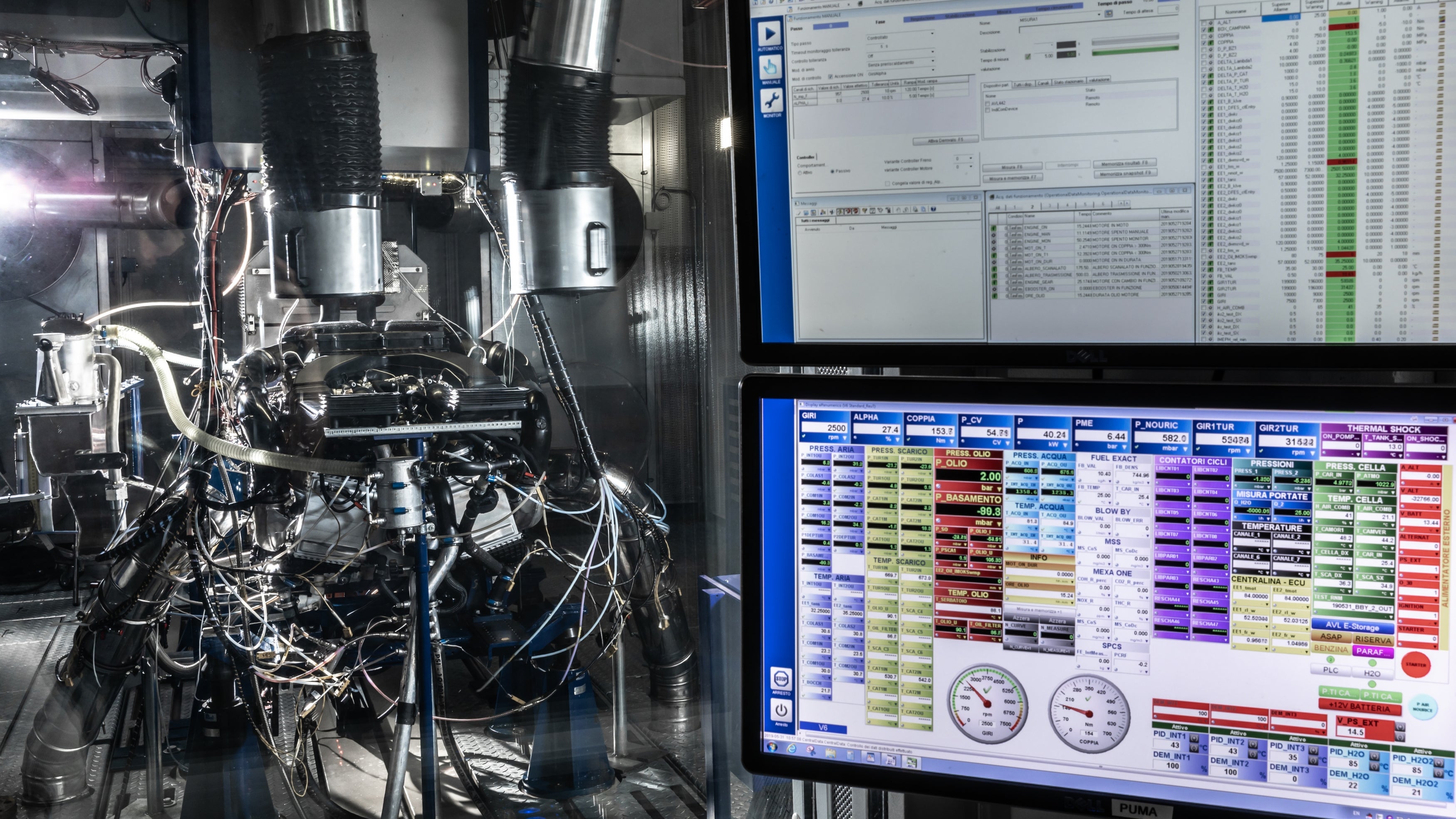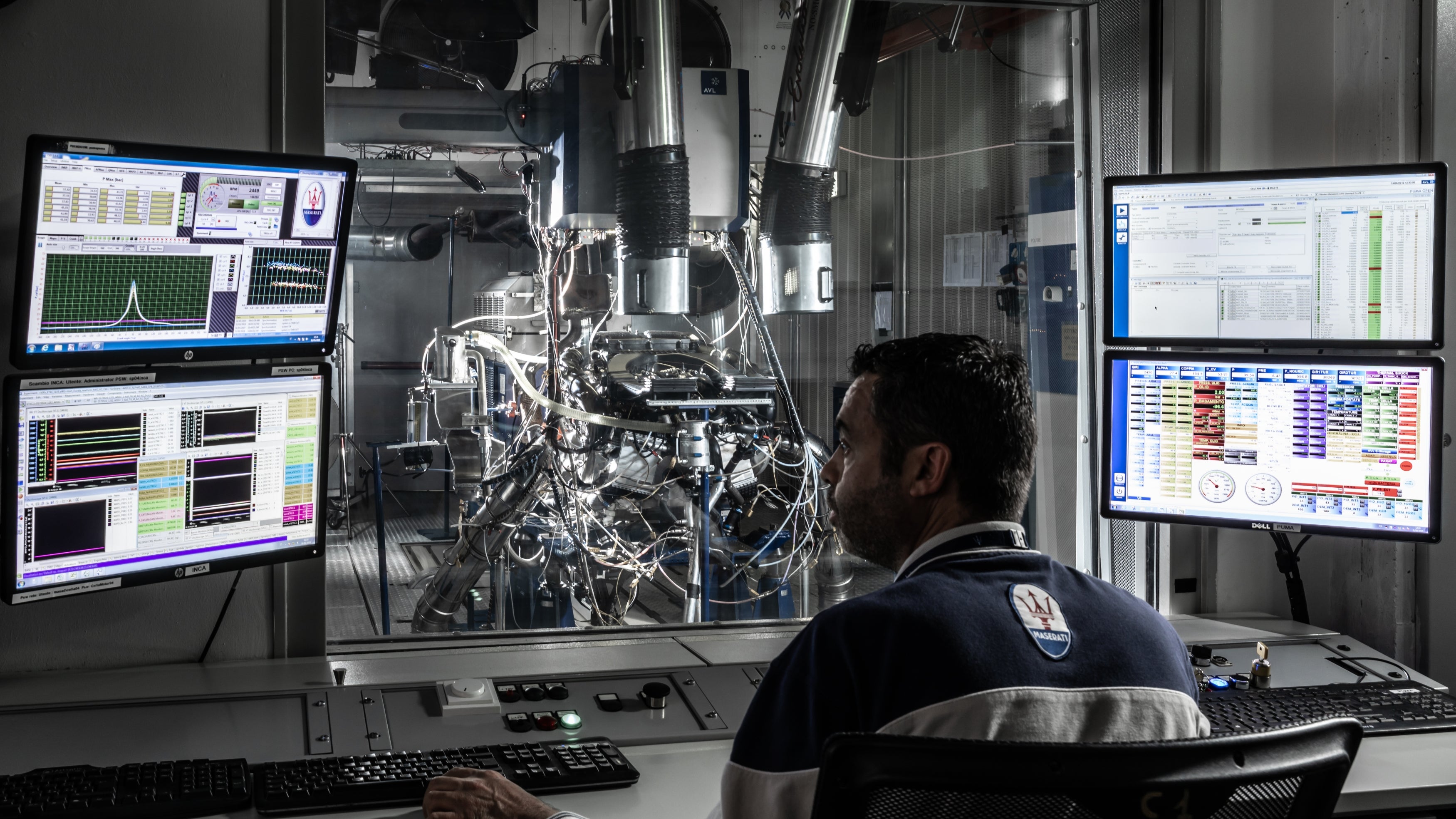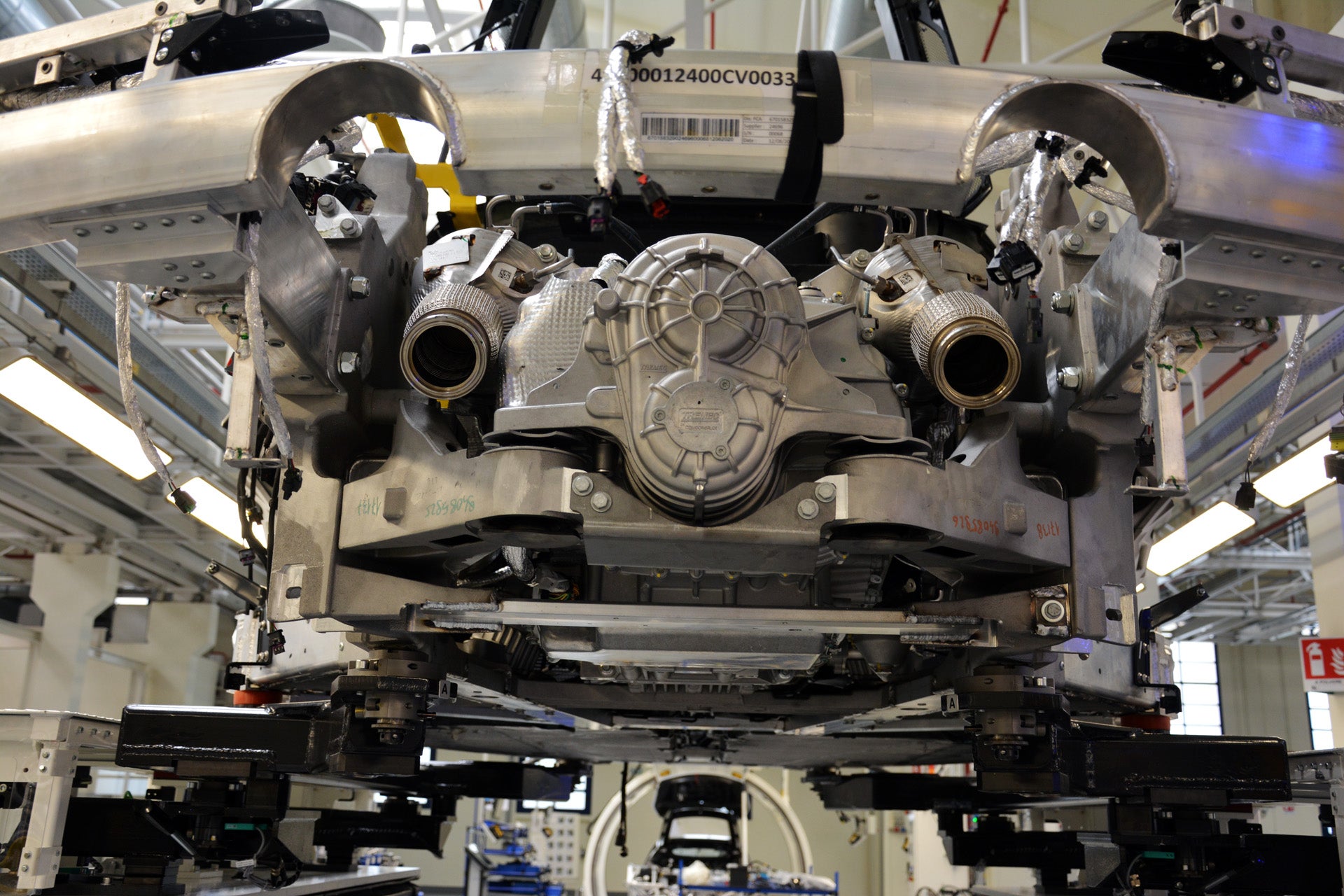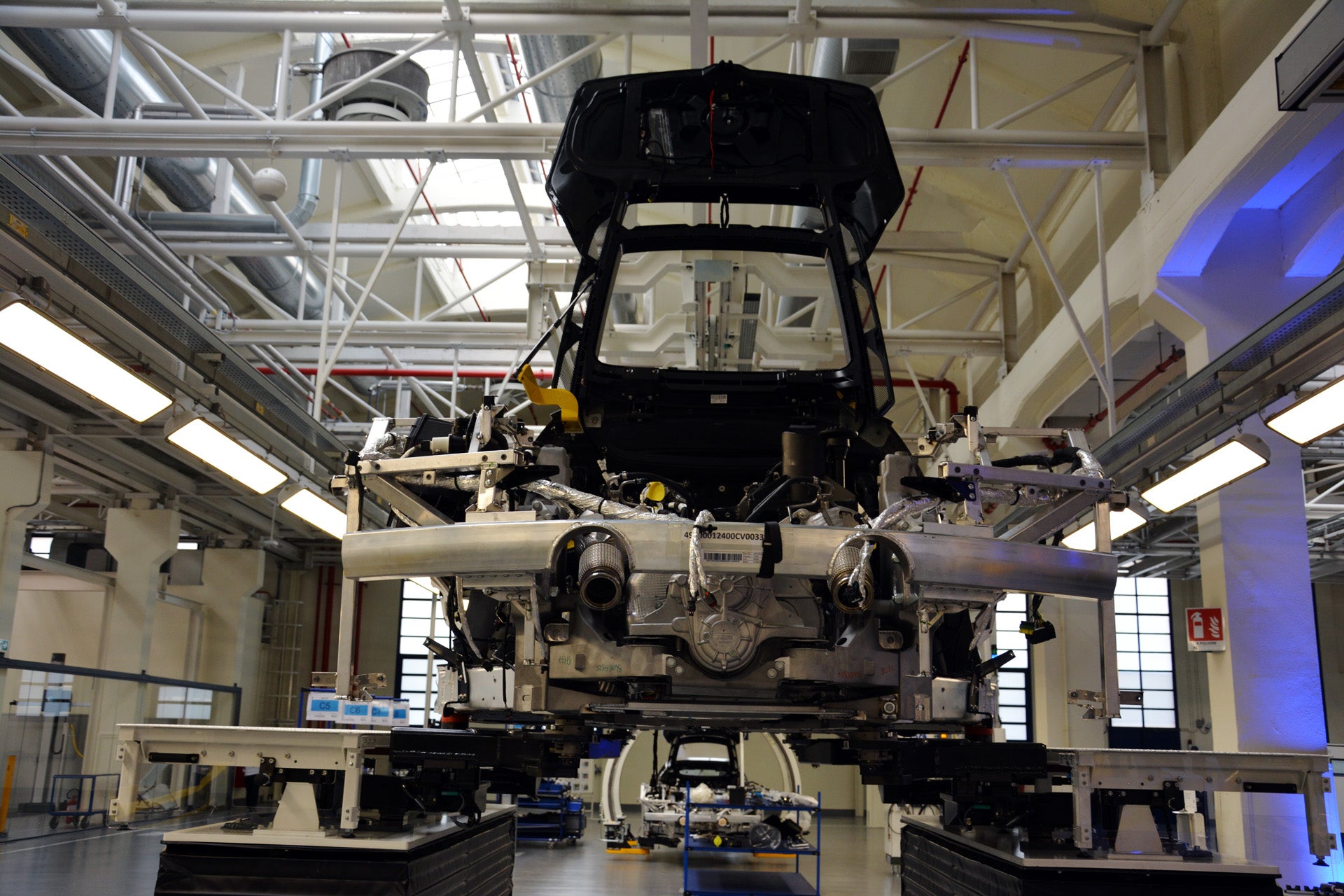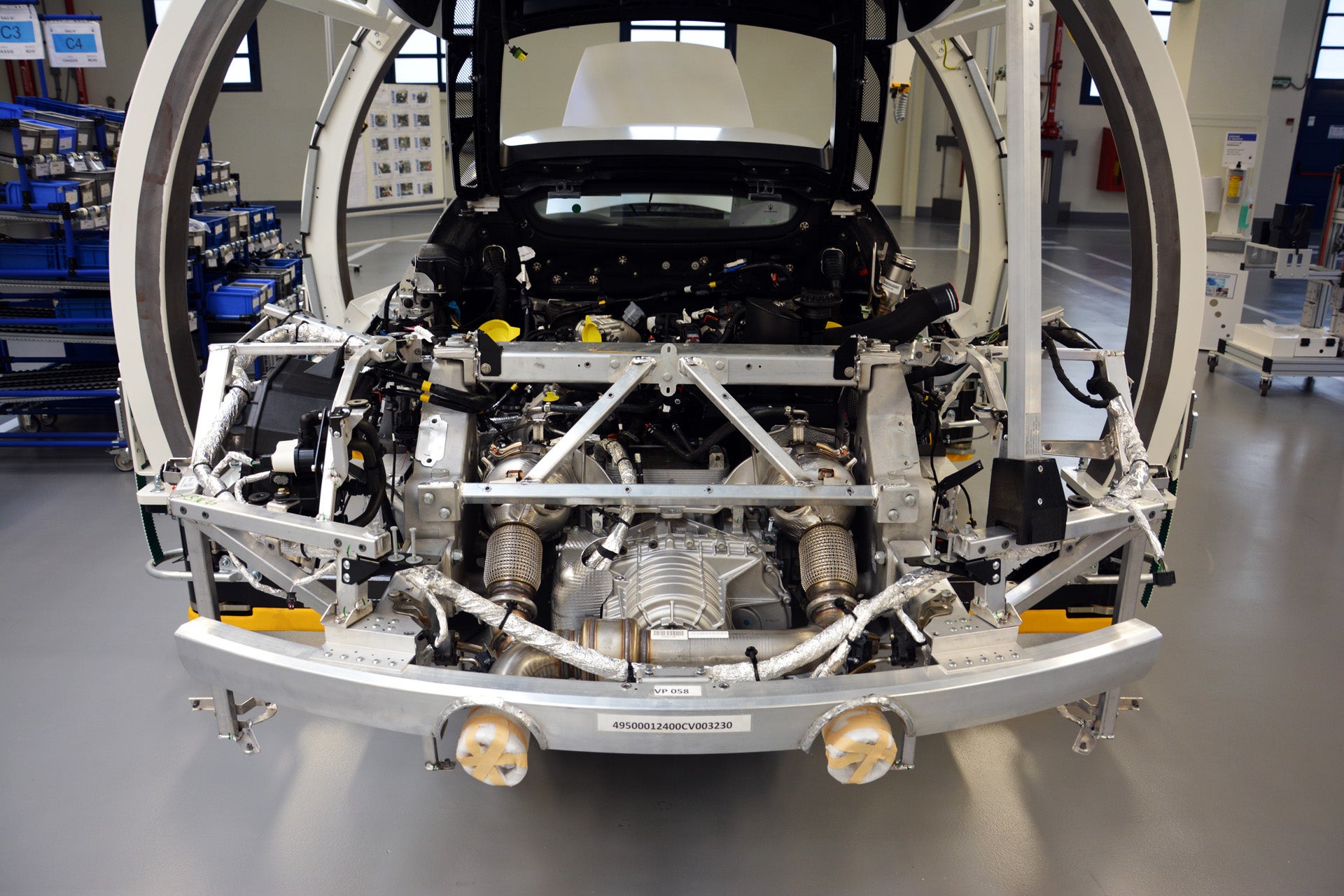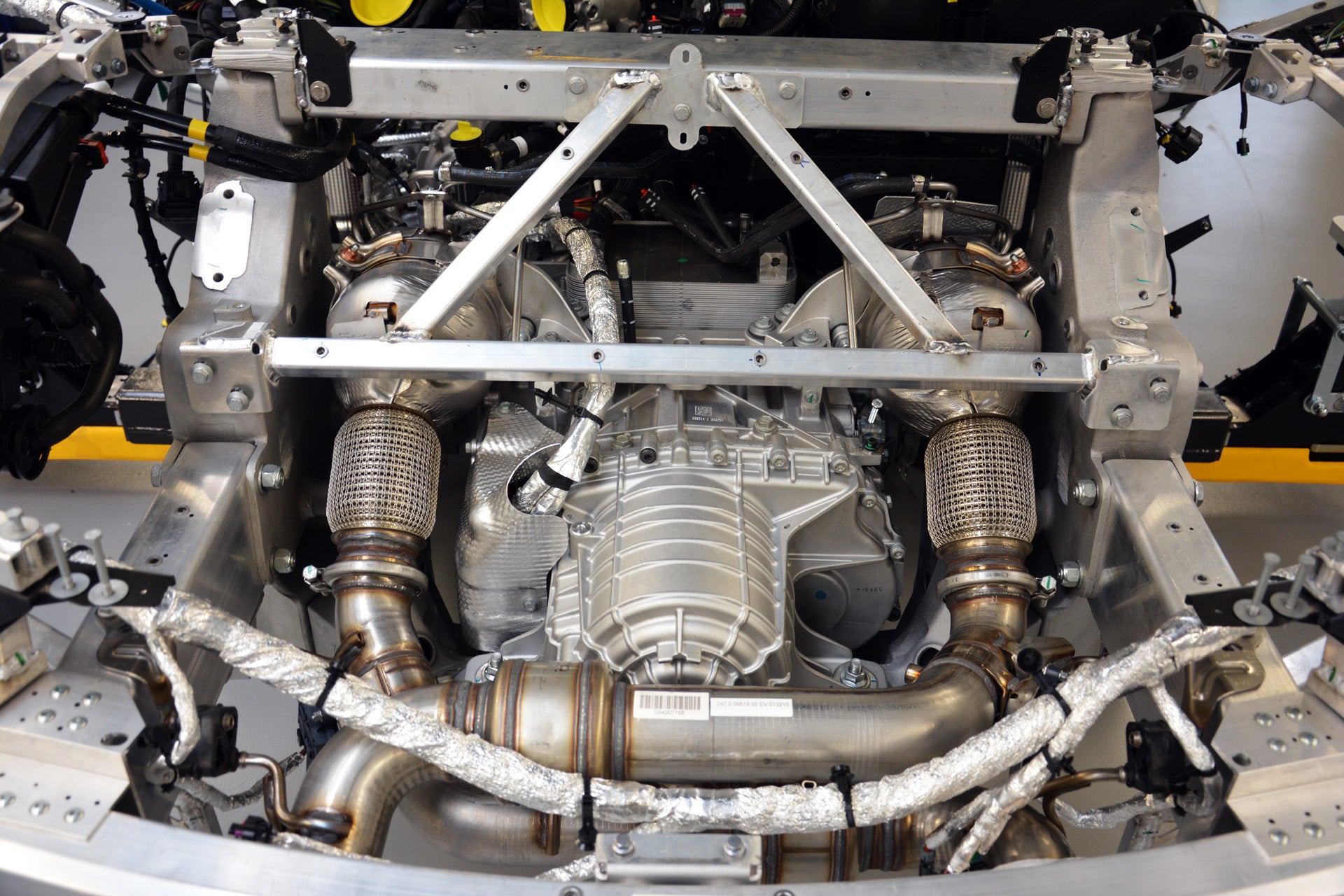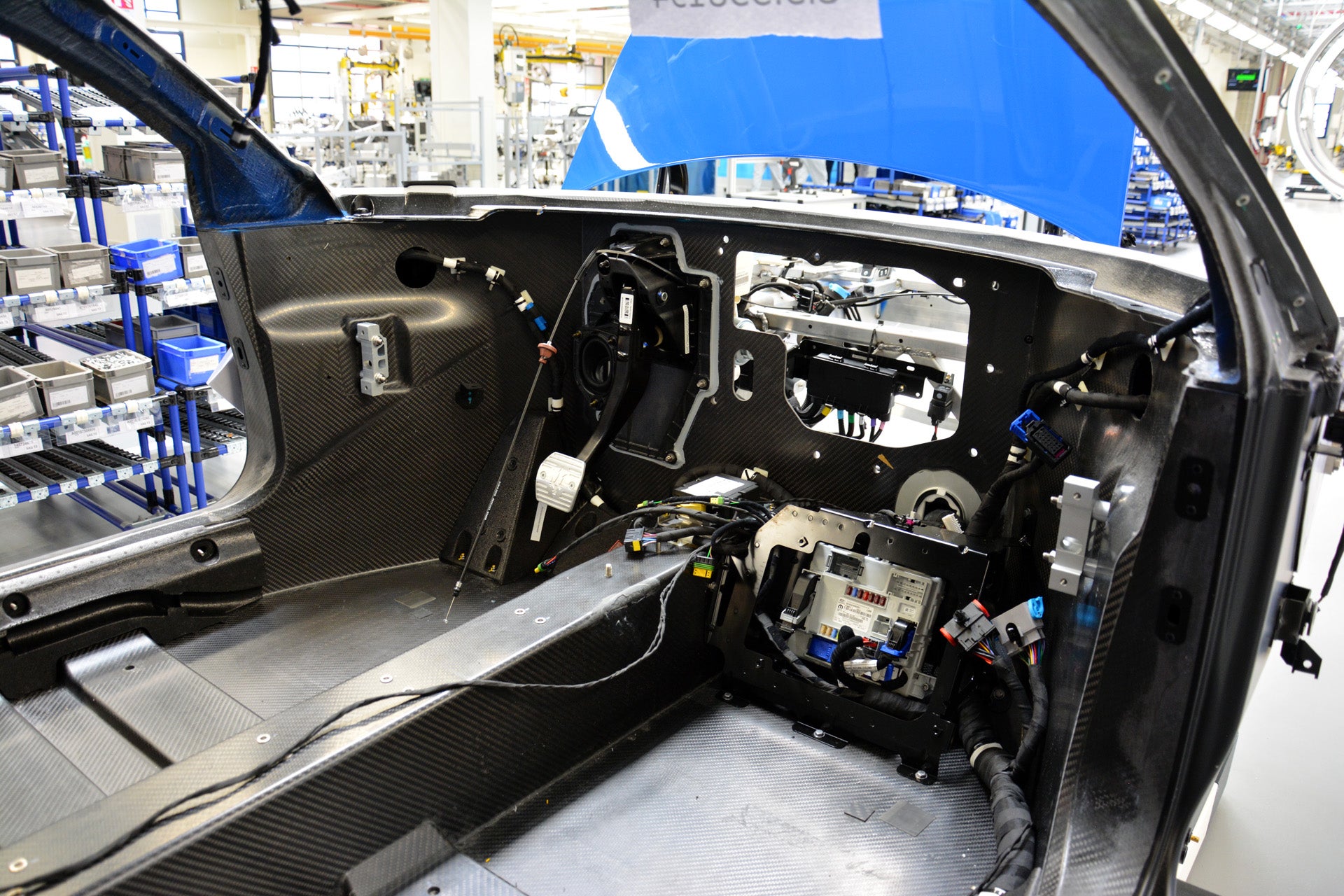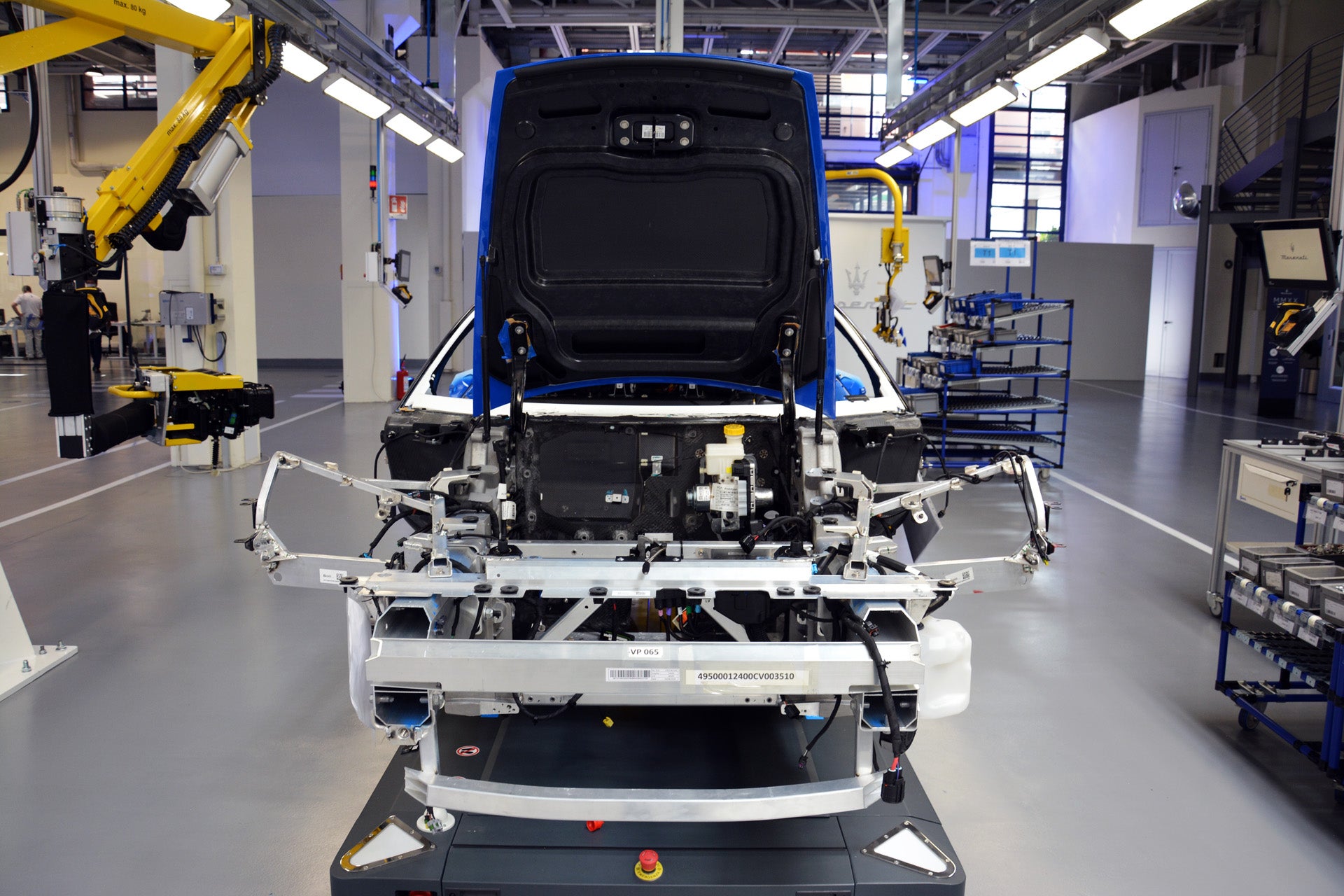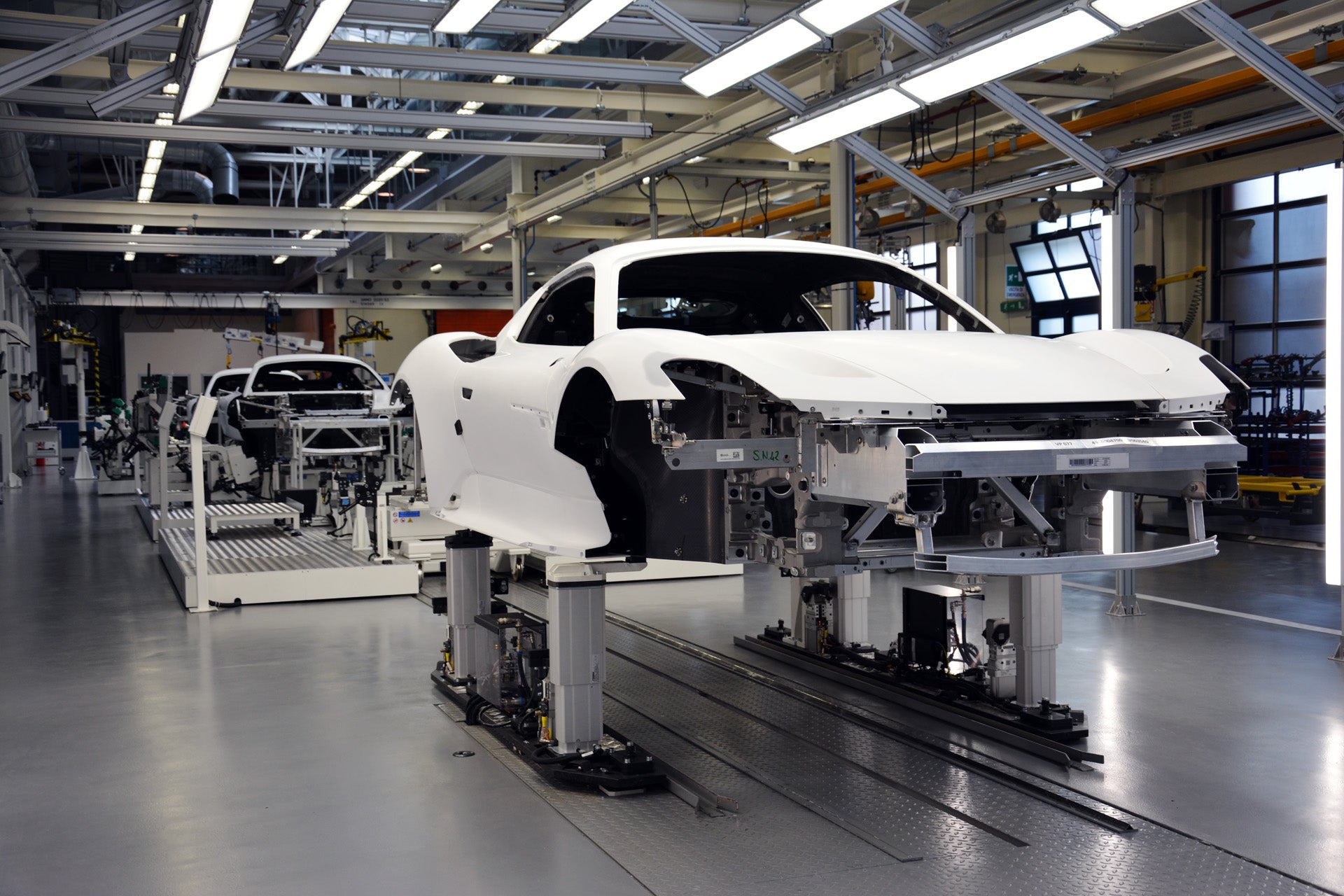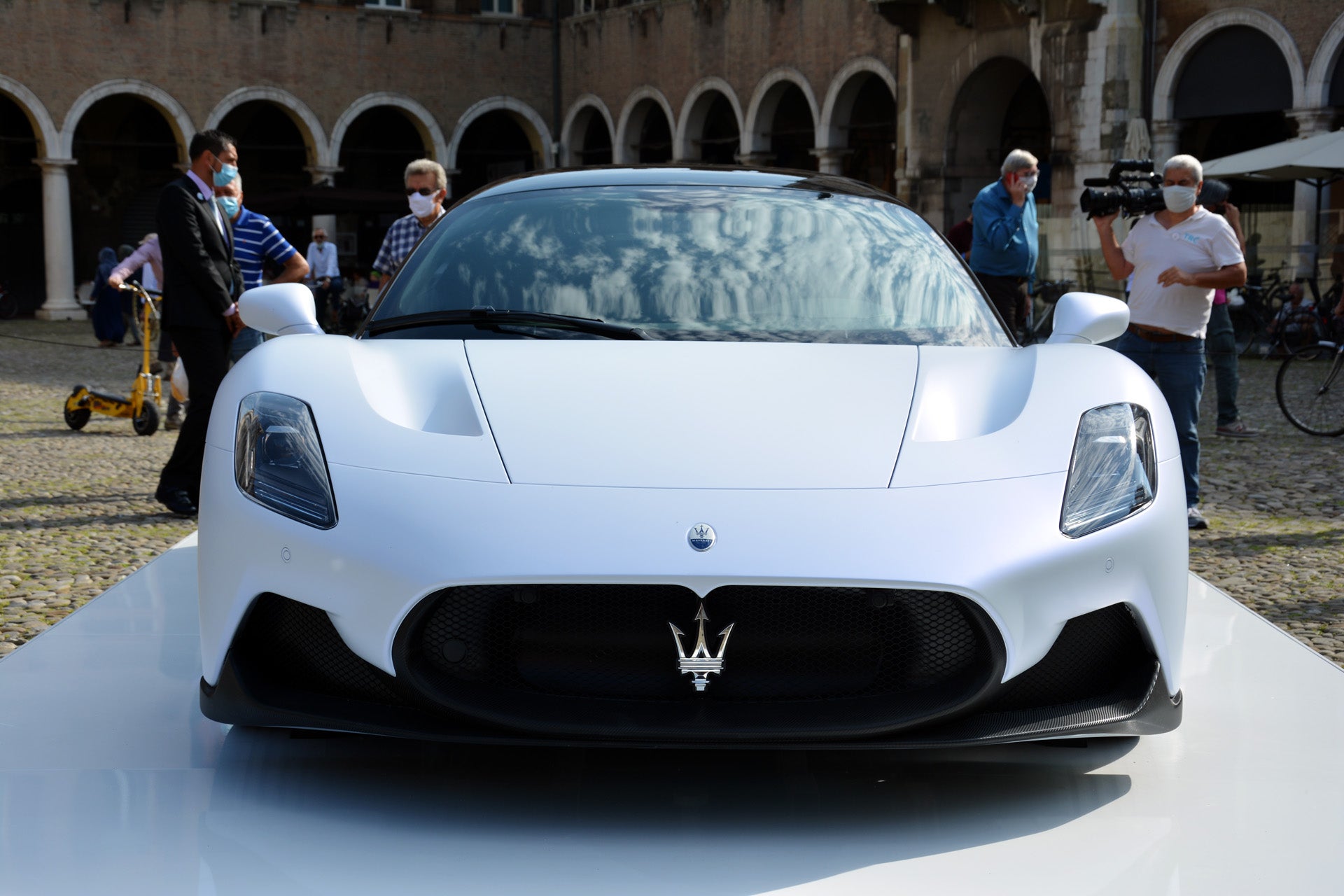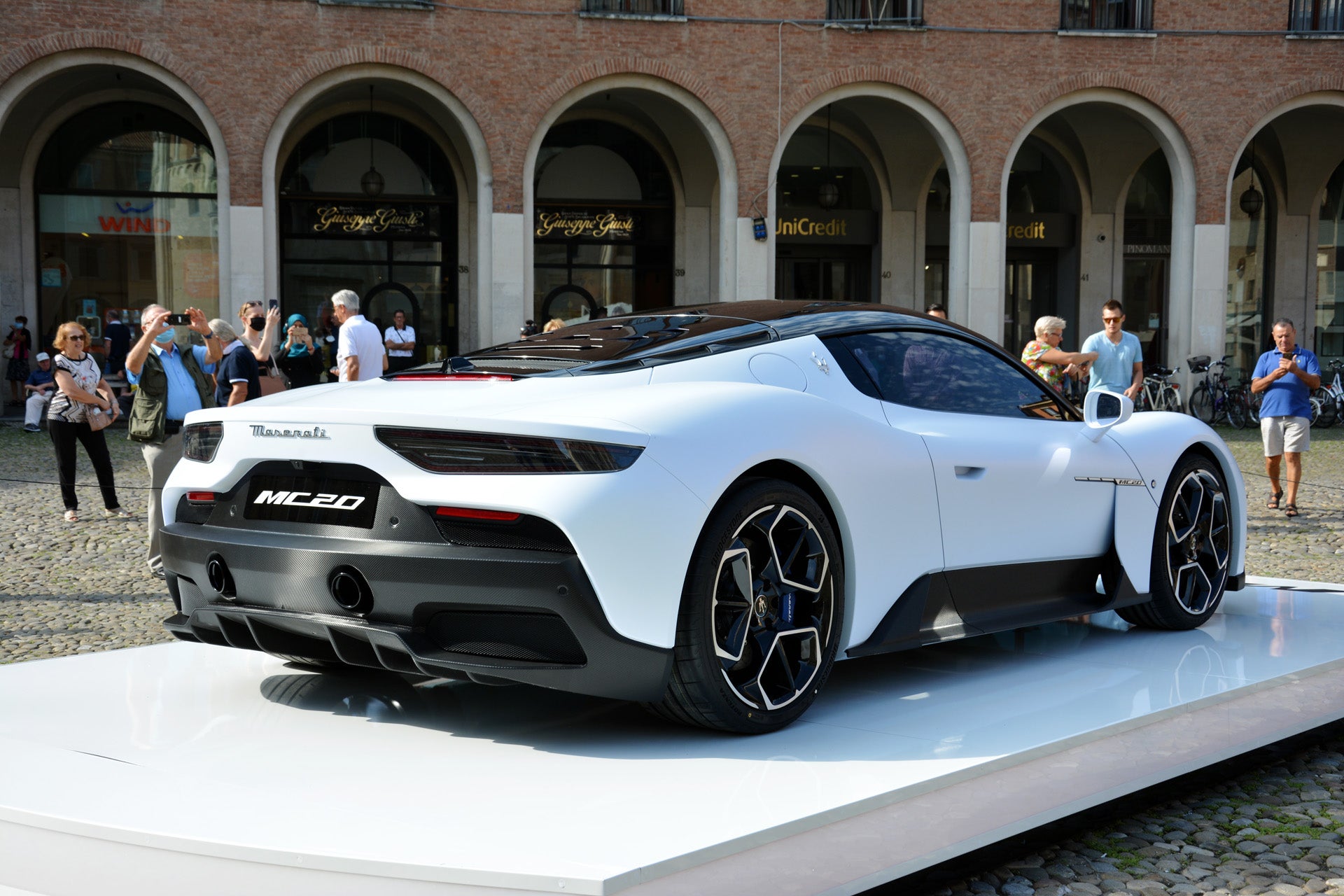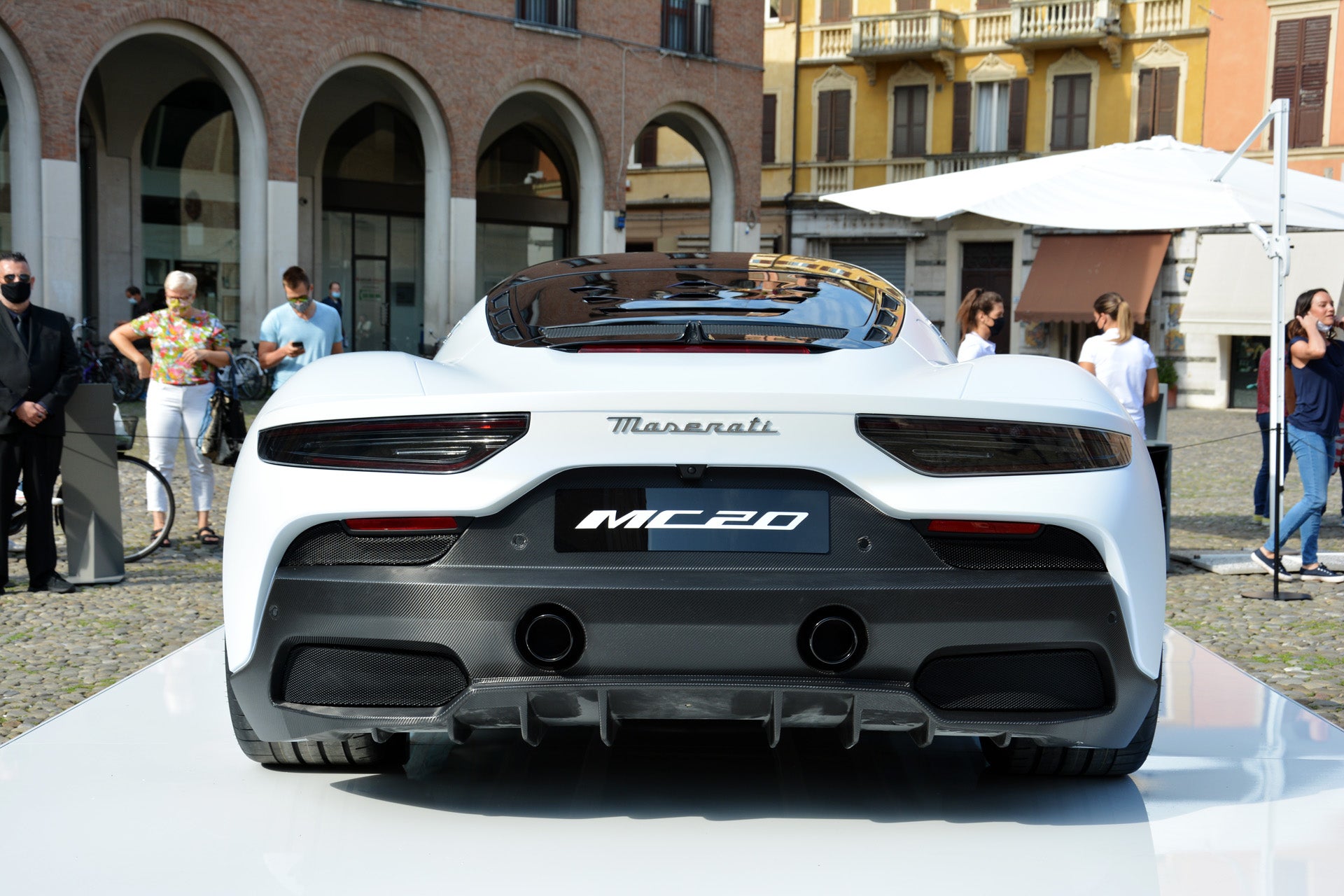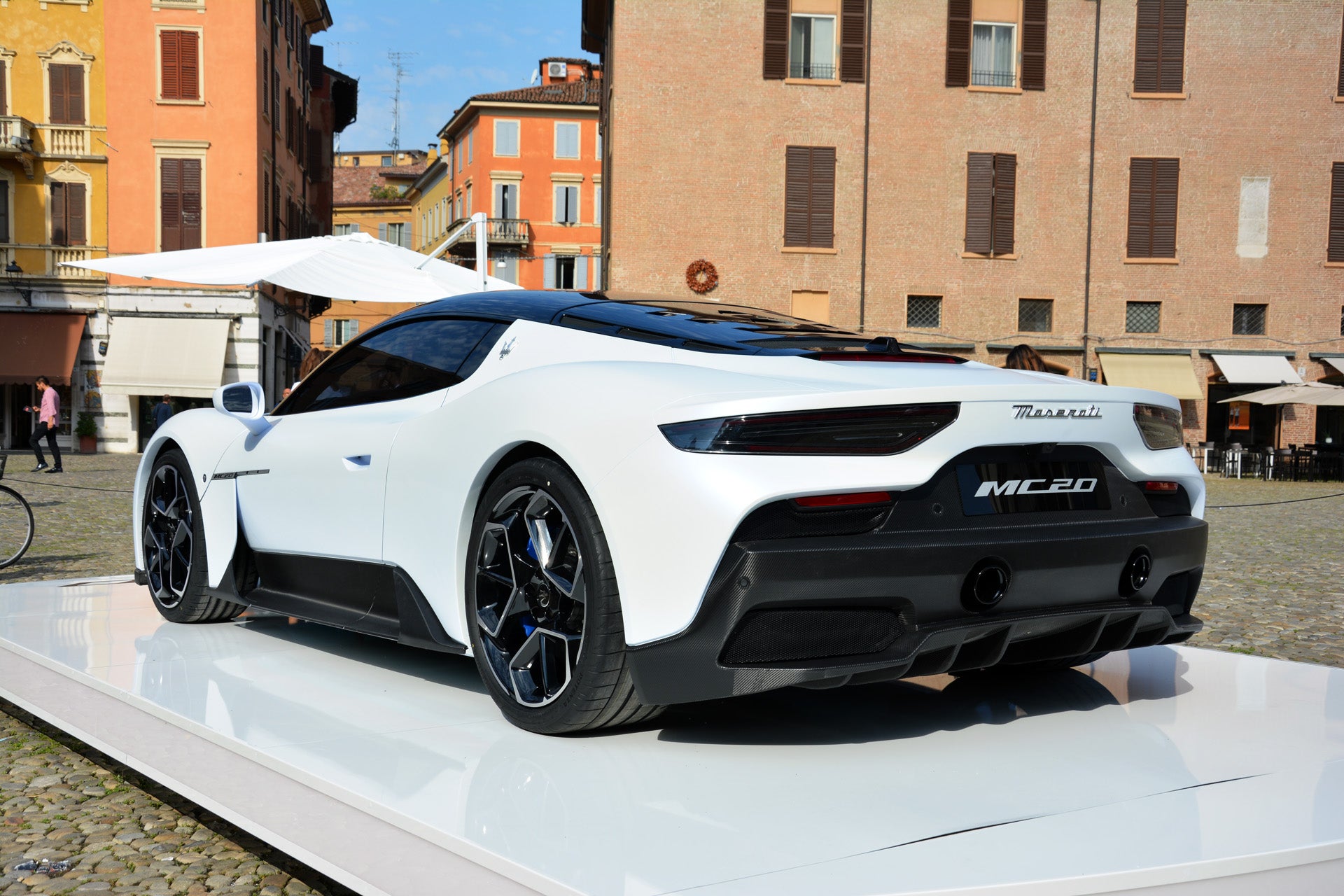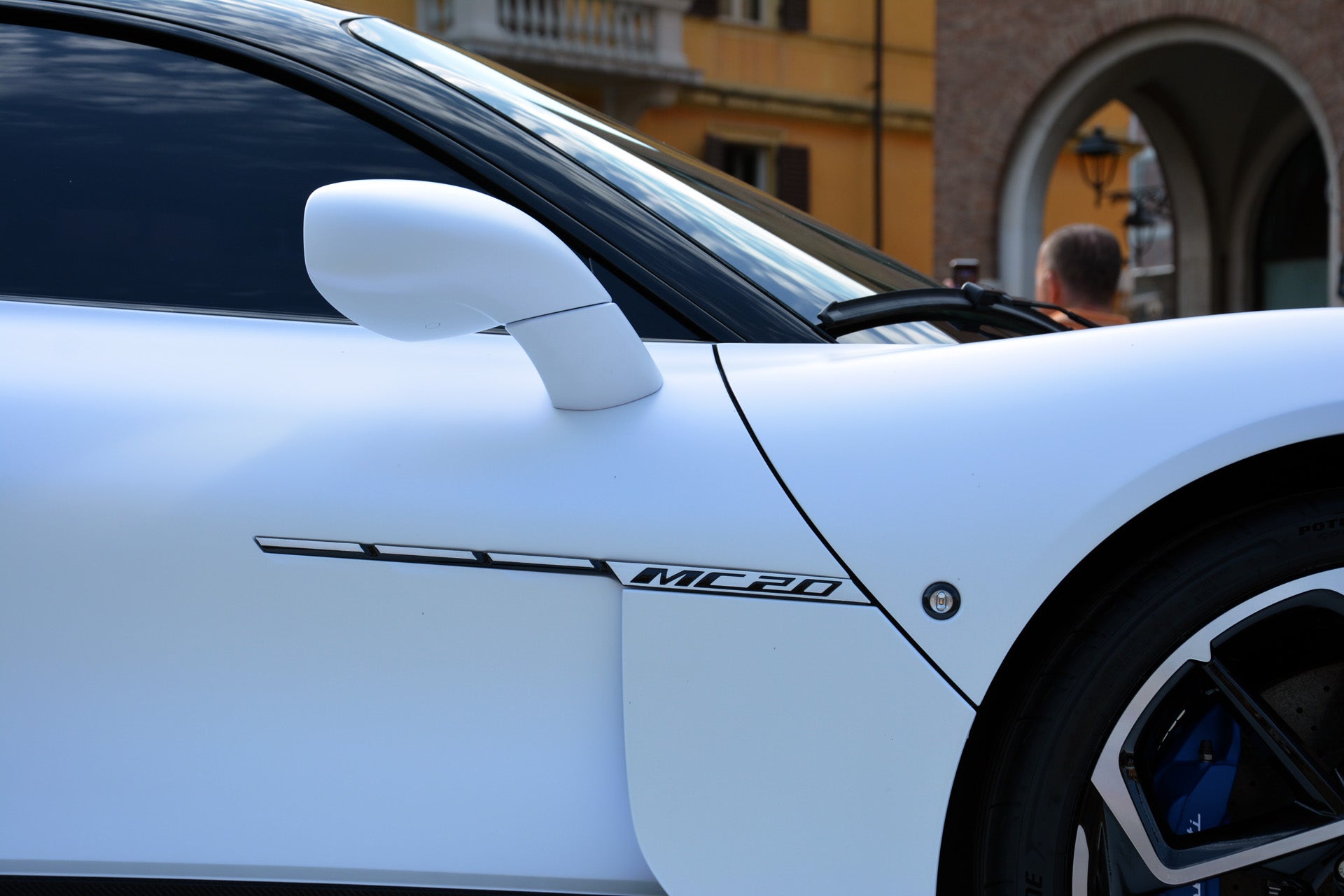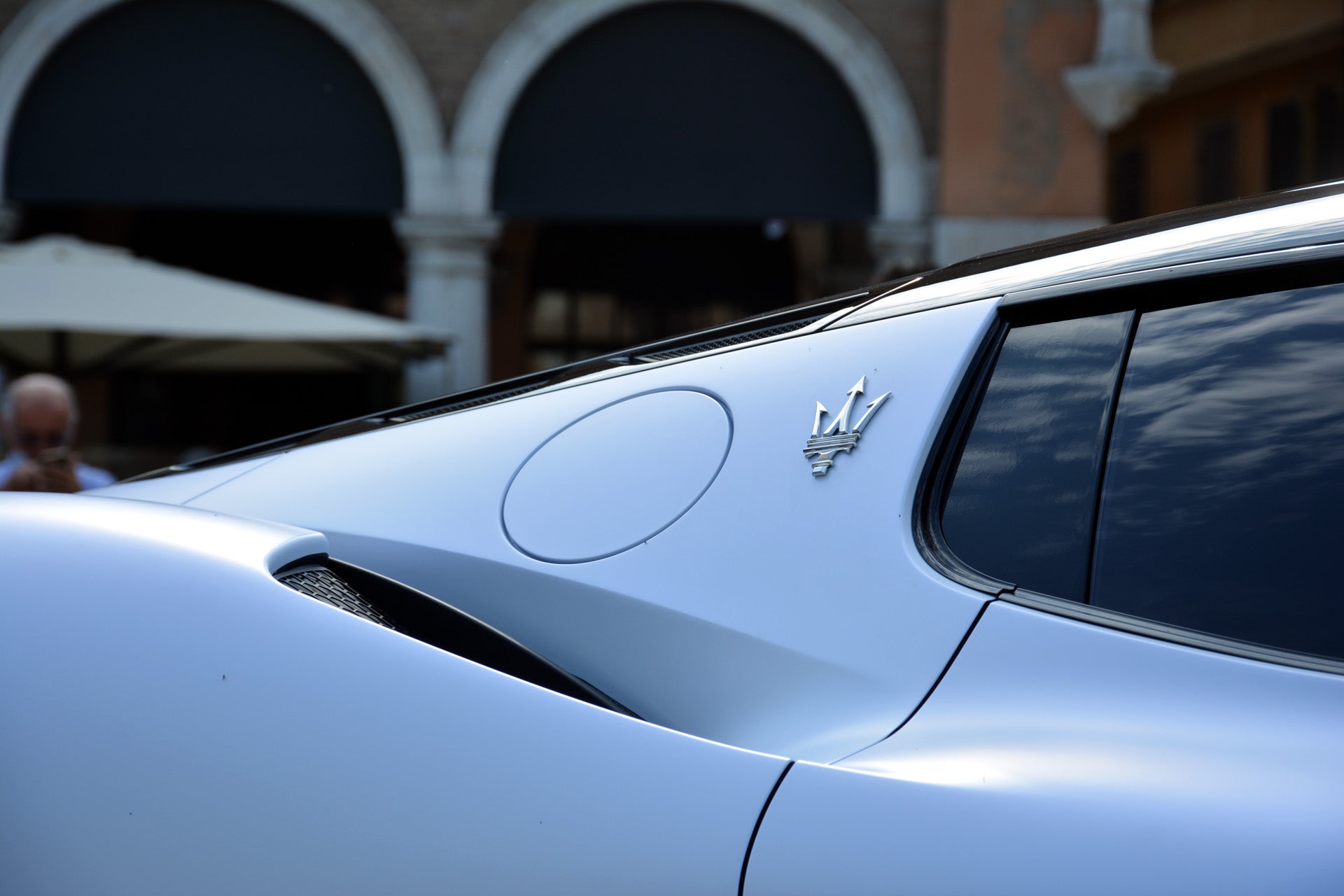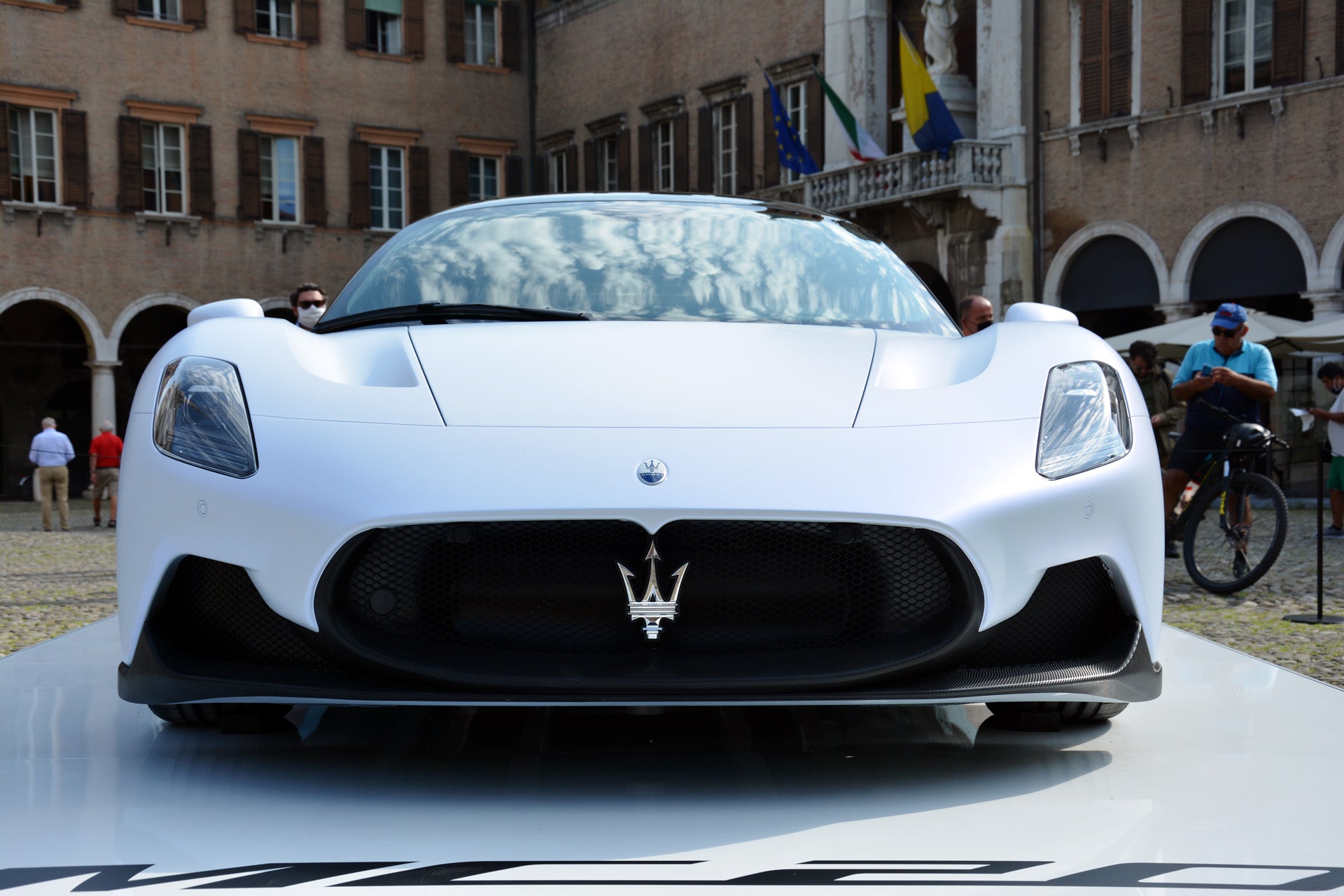On paper, the Maserati MC20 is a supercar with a very impressive résumé. It's got a brand new carbon fiber monocoque. The engine lives in the middle, and it happens to be Maserati's most advanced twin-turbo V6 to date, the dual-combustion chamber Nettuno engine. It boasts 621 horsepower and an impressive 8,000 rpm redline. The MC20 weighs under 3,306 pounds and happens to be a 202 mph affair. A convertible and fully electric version are on their way, too. But none of those specs do justice to the hard work Maserati's team put in—and in very short order—to create the brand's first proper supercar weapon since the 2004 MC12.
The automaker said Wednesday that the MC20 program only began in January 2019. That suggests a very rapid development program, especially if we go with the idea that the MC20 somehow has nothing to do with Alfa Romeo's canceled 8C supercar.
Maserati's team managed to cook up its first actual engine in less than half a year, securing its prototype to the testbed by May. The Maserati Engine Lab can test cars with engines up to 1,000 hp and speeds of about 186 miles before continuing onto the track. Certification tests can take as long as 200 hours because every market demands five to six tests for certification, which means every test is repeated in all of the car's modes. This is not specific to supercars, but to all new engines aiming for global homologation.
Maserati says an engine's development requires from six months to a year in the testing room, representing between 400 and 600 hours on the roller beds to verify emissions and fuel consumption. After all this work put into the 3.0-liter twin-turbo V6, Maserati achieved a specific output of 207 horsepower per liter.
When it comes to the looks of the MC20, Maserati remains tight-lipped about who was responsible for which part of the design. What's for sure is that with the leadership of Alfa Romeo, Maserati, Fiat, Abarth and Lancia design chief Klaus Busse, Centro Stile Maserati in Turin created one of the cleanest new supercar shapes on the market, partly thanks to the MC20 using ground effects instead of the more aggressive exterior aero elements that would break up its smooth surfacing.
After the doodling came the scale models, some of which made of carbon fiber spent plenty of time at the Dallara Wind Tunnel. Maserati rented out the fan house for over 2,000 man-hours, after which came more than a thousand CFD (Computational Fluid Dynamics) simulations before the final shape could be presented in clay.

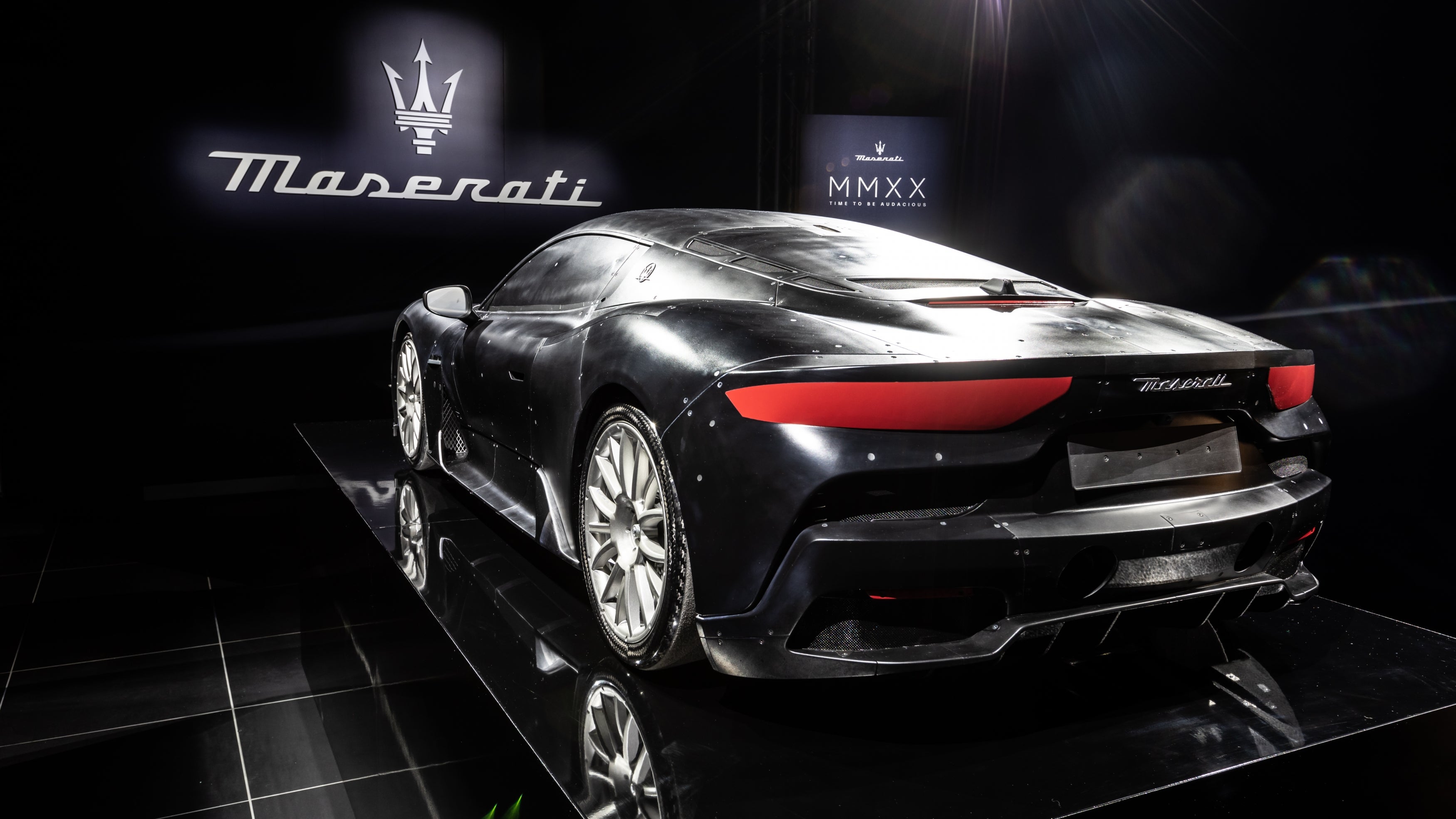
While the composite chassis masters at Dallara figured out how to give Maserati a lightweight monocoque that can be layered to spec for the cabriolet and the forthcoming all-electric MC20s as well, the talent team came up with the full-scale clay model the whole team has been waiting for.
While presenting the GMA T.50, Gordon Murray revealed that the McLaren F1's rear is missing some curves because they just couldn't see the highlights properly in clay. In the digital age, this issue has been eliminated by 3D modeling. Still, shaping clay remains as physical as ever, with the process relying heavily on the experience of the delicate and precise sculptors. Forget your run-of-the-mill compact crossovers: a brand's halo car truly needs to look perfect in clay to show the board where the money went.
Inside the carbon-infused cabin, the car continues with the minimalist, yet elegant and sporty theme. With all of the MC20's Formula 1 engine tech, designers were wise to lose the trademark Maserati analog clock.
While FCA's designers figured out which shade of yellow, red, blue, black and grey should join the MC20's launch color of fancy white, the development continued mostly in the digital space at Maserati's Innovation Lab. As it turns out, a whopping 90 percent of the work can be done behind the Innovation Lab's doors, which makes car development significantly faster, as well as cheaper.
What's currently at Maserati's lab was originally built to come up with Alfa Romeo's rear-drive Giorgio platform, which underpins the Giulia and the Stelvio. FCA gave the space to Maserati after it decided to revamp the entire Modena operation to get these Tridents ready for battle.
It's the combination of Dallara's carbon monocoque and Maserati's powerful V6 that makes the MC20 a proper supercar. While we already know quite a lot about the Trident team's hand-built combustion engine, including that each will take three workdays to make.
On the other hand, not much has been revealed about the MC20 EV, apart from that it's supposed to debut next year named MC20 Folgore (the Italian word for "lightning"), and that it will feature three motors operating at 800 volts, including one at the front, and two at the rear as part of the ZF e-axle. Those two motors will have no mechanical connection, opening up the possibility for unlimited torque vectoring.
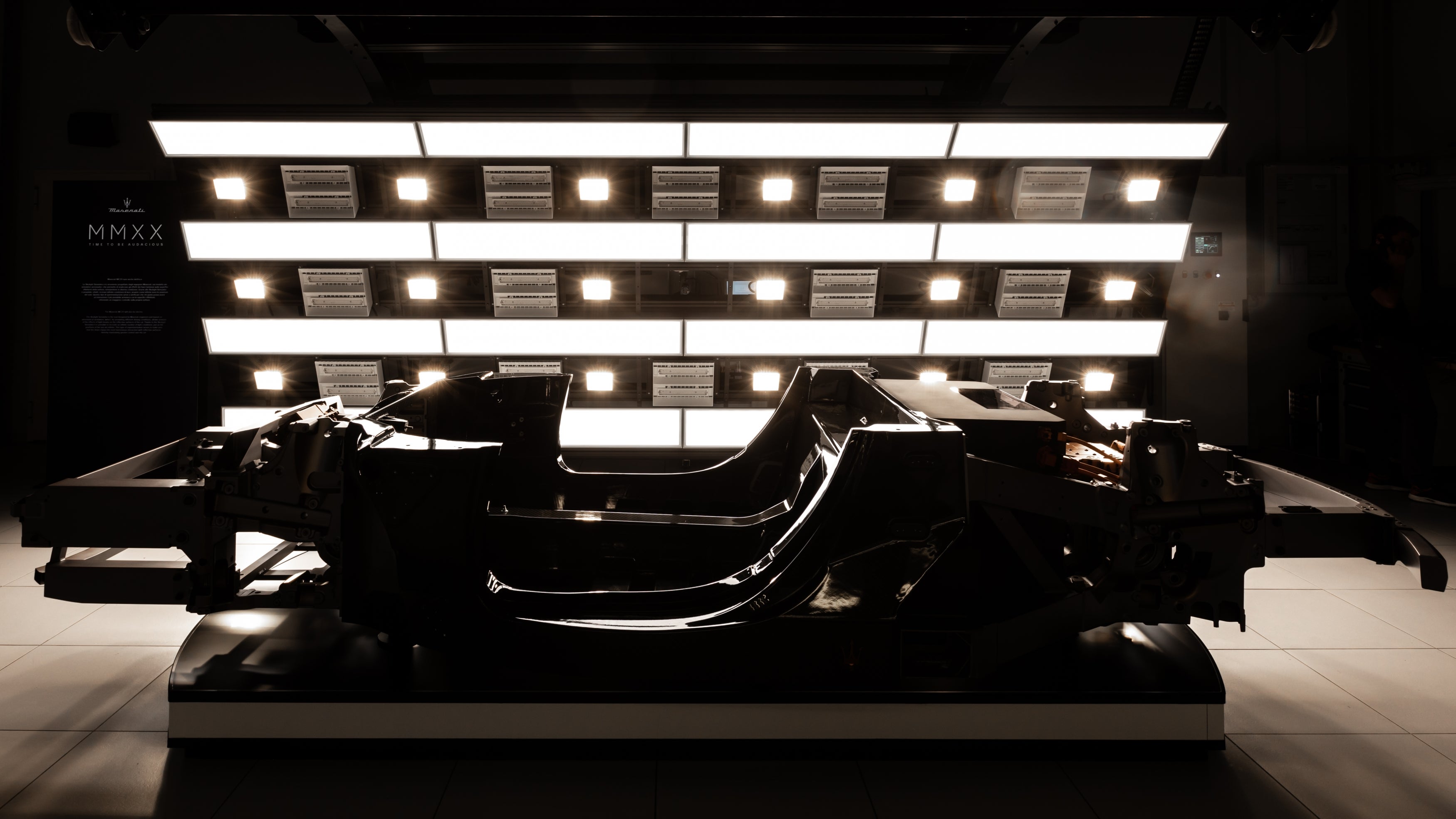
I visited Maserati's plant on Modena's Viale Ciro Menotti last November, when the final Ferrari-powered GranTurismos were just about to go through their paint checks. Since then, Maserati spent a good deal of money on the old factory to refurbish it for its upcoming fully electrified product line, and while I had to skip the MC20 party due to the travel restrictions, others were more fortunate.
Seeing MC20 Verification Prototype 053 on the assembly line reveals a few details of how Maserati builds its latest supercar around that carbon tub, using the same eight-speed Tremec TR-9080 DCT transmission GM puts into the Corvette C8:

And it's not like the good people of Modena had to miss the fun. Right after the MC20's premiere yesterday evening, the prototype was driven to Piazza Grande, the town's—you guessed it—main square. The locals got the chance to check out Maserati's latest while enjoying a good espresso.
In case you were wondering who's the guy leaning on the MC20 may be at the top, please meet Federico Landini, the man responsible for Maserati's "Executive Sport Vehicle" line. I would say he seems happy with their latest effort.

Massive thanks to Ronan Glon! Got a tip? Send us a note: [email protected]
